#Fidan hatun
Explore tagged Tumblr posts
Text






























Magnificent Century Season 4 + Women Helping & Caring About Each Other
#Muhteşem Yüzyıl#Magnificent Century#mcedit#Muhtesem Yuzyil#Hurrem Sultan#Nurbanu Sultan#MC S4 Women Caring#weloveperioddrama#perioddramaedit#period drama#historical drama#MCPlus#Great Prediction#The Secrets of Fatma Sultan#The Day of Reckoning Has Come#The Last Days of the Great Sultana#Mahidevran Sultan#Gulfem Hatun#Afife Hatun#Canfeda Kalfa#grief tw#pain tw#violence tw#Mihrunnisa Sultan#Defne Sultan#Fahriye Kalfa#Fidan Hatun#Awkward-Sultana
29 notes
·
View notes
Text











This red and black cloak is first worn by Aybige Hatun's lady-in-waiting in the twentieth episode of the second season of Magnificent Century. The cloak is then seen on Aybige Hatun in the thirty-first episode. Three episodes later, it appears again on Hatice Sultan. The cloak is then worn by Rakel Hatun in the thirthy-eighth episode of the same season. It briefly appears on Fatma Sultan in the third episode of the fourth season. It is seen next on Rana Sultan in the twelth episode. Despite the lighting being rather dark, the cloak is also recognizable on Fidan Kalfa in twentieth episode.
After this use, the cloak was altered as the neckline is slightly different and the hood appears to be missing. This new version is debuted by Mihrimah Sultan in the thirty-fourth episode of the fourth season.
The cloak appears again on Yasemin Hatun in the twenty-first episode of the first season of Magnificent Century: Kösem. Dilruba Sultan also wears it in the thirtieth episode, however the hood appears to have been reattached to the cloak. The cloak makes another appearance on Zarife Hatun in the twenty-fifth episode of the second season.
This post is an updated version of an older post.
#Muhteşem Yüzyıl#Muhteşem Yüzyıl: Kösem#Magnificent Century#Magnificent Century Kösem#Magnificent Century Kosem#period drama#costume drama#historical drama#Aybige Hatun#Hatice Sultan#Hatice Sultan (Daughter of Hafsa)#Rakel Hatun#Fatma Sultan#Fatma Sultan (Daughter of Hafsa)#Rana Sultan#Fidan Kalfa#Fidan Hatun#Mihrimah Sultan#Mihrimah Sultan (Daughter of Hürrem)#Yasemin Hatun#Dilruba Sultan#Zarife Hatun#Unnamed Harem Members#reused costumes#recycled costumes
16 notes
·
View notes
Text
@faintingheroine

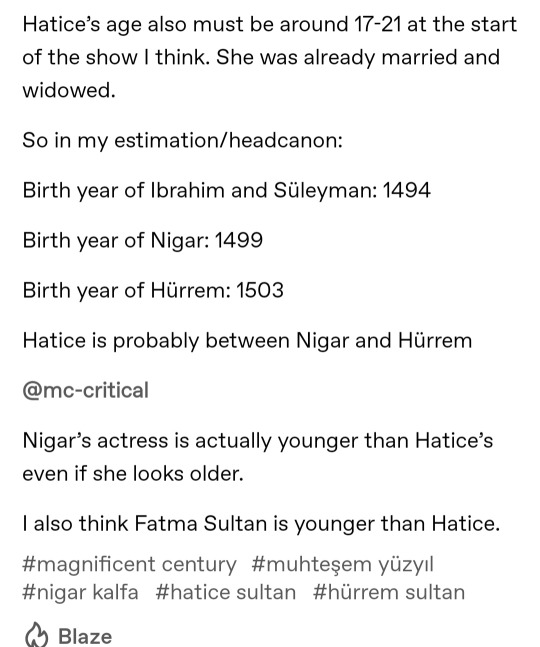
I might remember incorrectly,so correct me if I am wrong,but it was said that she was in service for 6 years. That could be referring to six years of being Kalfa, which would mean she received rank in 1516,that would make sense as it would mean Mahidevran and Gulshah, were already there, Mustafa was born and their relationship would start at that time. It also explains how close Nigar, Daye and sumbul are, they could have served them back in Manisa. However, she would not receive rank as soon as she arrived, I can imagine her spending some time in harem as a potential concubine, where Daye noticed her for hard working and intelligent nature,bonded and she introduced her as harem kalfa. That would mean she was in harem as a regular concubine for some time.
Another question is when she was kidnapped. Considering she spent good enough time in her motherland to remember it, even learn russian from her grandmother and being still fluent after all those years, I would assume she was around Hurrem's age, when kidnapped. In the best case scenario, she would have been bought immediately and spent little to no time in the slave market,so to add this up: around 17 years of her time in motherland + several years as Çarye ( it should include time to get used to the new environment, learn Turkish and gain mutual trust and bond to high ranking servant, possibly Daye, with whom she has mother-daugther relationship) + 6 years of her time as kalfa and her age by the time of 1522 would be about 25+ in my opinion, making her birth date 1497 or possibly(even likely) earlier. That would mean she gave birth in late thirties/yearly forties(considering it was actually common in the Ottoman empire and even quite the average age of harem servants to marry and give birth), that would mean she married for the first time some time before and she would have been around 40 or bit above when she was set to marry again, which again would have been normal in ottoman empire, especially if it was urgent. So she could have been in her late 40's, early 50's, when she died. Gray marks are actually quite deceiving in the show, pre time skip Gulfem, Mahidevran, sah and Suleyman have no gray markings despite Mahidevran being 44-45, Gulfem a bit older and Sah and Suleyman even greater In age, while Hafsa had her own hair even in her sixties. Gray markings actually appeared only after timeskip, possibly to keep up with Hurrem, whose actress was changed,while others remained the same. Even Fidan hatun got gray markings despite being quite young compared to others, as she arrived in harem when Hurrem married suleyman, her friend Fatma was Mustafa's favourite, so she was somewhere close to their age, that would make her no more than 30 yeas after time skip and in late 30's, when she for gray markings. So, even if Nigar was in late 40's yearly 50's, she would not get Gray marks.
In the show, Hatice was married for six months before she widowed, if I remember correctly. Proper time for an ottoman princess to marry was 17 years, that is actually the age when Shah, Hurrem and Suleyman considered marrying Mihrimah off, so if that happened to Hatice, that would make her only 17-18 in 1520. I can imagine, Hafsa setting her marriage as soon as she reached the proper age, so she would not "fade away in sadness", in her mind that would have been right decision to make, so I would say she was not even 20 in 1520. I'd estimate her date of birth to be 1501 or more likely 1502.
Fatma could be younger than Hatice, as she represents herself as younger than Hurrem, so at any rate she would have been born after 1503, that would also explain why she mentions Hatice so much,but not other sisters, who were probably much older than her.
#magnificent century#muhteşem yüzyıl#nigar kalfa#hatice sultan#hurrem sultan#haseki hurrem sultan#mahidevran sultan#gulfem hatun#sah sultan#sultan suleyman
15 notes
·
View notes
Text

#卍TÜRK #卍İNSANININ #卍FENOTİPİ (DIŞ GÖRÜNÜŞÜ)
#卍DiğeSoruTürklerinTipiHakkındaTürkler çekik gözlü değil, sarışın, kumral, genelde mavi ve yeşil gözlüdür. (Boylara göre elâ ve kahverengi) Beyazdır, Alpen Brakisefal'dir. Uzun Saçlıdır.
Saçların siyaha dönüşmesi evrim nedeniyledir. Yörüklerde, Muhacir dediğimiz (Konya ve Tokat civarından Balkanlara giden Yörüklerde saçlar sarıdır.
#卍Türkler
“rüzgar gibi atlar üstünde, uzun saçları, mızrak ve yayları At üzerinde dönerek ok atmaları ile”
düşmanlar üzerinde müthiş tesirliydi.
Tarih Boyunca Türk Ordusuna Ait Tasvirler, (#卍Türk Kültürü, sayı 22, s. 81) #卍Türk kumandanlarının uzun saçlı olduğu görülüyor.
Doğu Türkistan, Turfan, Hoço, Bezeklik minyatür ve heykellerindeki kadın saçları ise, örgüden ziyade omuzlar üzerine bırakılmıştır.
Göz şekline gelince; Türk tipinin gözü ne çok çekik, ne de pek iri olan, orta bir biçimdedir. Nisbeten küçük ve dar olan göz yarığı vardır.
Realist Türk fresk ve resimleri, heykeller (mesela Kültiğin heykeli) bu tasvirin doğruluğunu ortaya koymaktadırlar.
Bu göz şekli, Dede Korkut hikayelerinde (M. Ergin, Dede Korkut Kitabı, s. 17) “kıyma göz” olarak geçer.
Dede Korkut Kitabı - Prof.Dr. Muharrem Ergin
"Burunla dudak arasındaki çizik derindir. Çene ufak ve kuvvetli, kulak küçük ve yapışıktır." Minyatürlerde sakal unsuruna pek rastlanmıyor.
Dede Korkut’un kahramanlarından Kara Göne ise “bıyığını ensesinde yedi yerde” düğümlemektedir. Eski heykellerde sakal ve bıyığa rastlanmıyor.
Destanlar ne kadar muhayyile mahsulü olurlarsa olsunlar, onlarda dile gelen, eski Türk tipidir. Dede Korkut bu tipler resmi geçidi gibidir.
24 Oğuz Boyu ve Tamgaları Hakkında Detaylı Bilgi
Oğuz Kağan destanında, Oğuz’un vücud yapısı hakkında:
“Ayakları öküz ayağı, beli kurt beli, omuzları samur omuzu, göğsü ayı göğsü gibi idi”
Hayvan benzetmelerinin yer aldığı bu tasvirde bize eski Oğuz tipinin vücud yapısı hakkında sağlam bir fikir verilmiştir. Bu tariften eski Türk tipinin geniş göğüslü (D. Korkut’ta “gin göğüs” tabiri), çevik bacaklı, ince belli olduğunu anlıyoruz.
Yine Dede Korkut’ta Oğuz kadınlarından bahsedilirken “kaza benzer kadın, kız” tabiri geçiyor. Bu gün yadırgadığımız bu benzetmenin beyaz tenli, uzun boyunlu, iki tarafa salınarak yürüyen bir kadını pek güzel bir şekilde canlandırdığı görülmektedir.
Bamsı Beyrek hikayesinde (s. 40), kızkardeşi Beyrek’i
“apul apul yörüyüşünden, aslan gibi turuşından, kanrıluban bakışından” tanır.
Bu bakışla ilgili Gözler kısılınca aldığı şekil Oğuz Türkleri genel olarak geniş gözlü geniş alınlı elmacık kemikleri çıkıktır.
Bu fevkalade tasvir sayesinde eski Türk “alp” ının davranışlarını çok müşahhas bir şekilde tahayyül etmemek mümkün değildir.
Netice olarak, antropolji, tarih ve sanat eserlerinin ışığı altında, eski Türk tipinin; uzuna kaçan orta boylu, beyaz tenli, hafif çekik boylara göre mavi, ela veya kahverengi gözlü, mutedil burunlu, uzun saçlı ve sağlam vücutlu olduğunu söylemek mümkündür.
Fakat bir türlü harekete geçemez. Çünkü eline kargısını, ok ve yayını vermeyi unutmuştuk.
Birdenbire ikinci bir atlı gelip yanında durur; bu eski Türk kadınının sembolüdür.
Korkut’ta Selcen Hatun ve Banu Çiçek tipleri ile temsil edilen bu genç kadın, erkeğe silahlarını uzatır.
“Güz elmasına benzeyen al yanakları, savaşa gidişin heyecanı ile bir kat daha kızarmıştır.”
Atıyla birlikte sabırsızlanan yiğitin gözlerinde kıvılcımlar yanıp sönmektedir. Bir işaretle ok gibi ileri fırlarlar.
Kaşgarlı Mahmud'un misal olarak Divan”ına dercettiği eski şiir parçaları içinde İslamiyet’ten ve belki de Milattan evvelki Türk tipinin hususiyetine ait şöyle bir beyit vardır (C, I, s. 346)
"Ardı seni kız bodhu anın tal,"
"Yaylır anın artucu burnu takı kıval”
Yani:
“O fidan boylu kız seni harap etti: onun ardıç gibi boyu narinliğinden eğilir, burnunun biçimi de düz ve çekmedir”
Gene Çin vesikalarına göre Türk Tipi ;
Göz rengi – Yeşil,Mavi
Yüz rengi – Beyaz;
Saç rengi – Sarı,kumral
Kaş rengi – Kumral,
Boy – Uzun
M.Ö ve ilk yıllarında Asya’da (Vusun) (Ting-Ling) ve (kian-kuen)isimleri verilen tamimiyle sarışın ve kumral bir takım boy ve budunlar vardı.
Çin kaynaklarına göre bunların menşeleri Çin’in kuzeyindeydi bu Beyaz tenli Sarışın ve kumral budunların konuştukları dil de Türkçe idi:
Türklerin Beyaz olarak nitelendirdiğimiz (Beyaz ve Buğday tenli tipi) Moğol ve Çinlilerin Sarı ırk özellikleri ile ayrılıklarını gösterir.
(Türkler ve Kökeni -Kazım Mirşan Araştırmaları 12 Bölüm)
1937-39'da yabancı uzmanların eşliğinde onbinlerce denek üzerinde antropolojik araştırma yapıldı %95 Alpen Brakisefal Türk çıktı.
Türkiyede 1937-39 yıllarında binlerce denek üzerinde yapılan incelemede çıkan sonuç Halkın %95'inin Alpen Brakisefal Beyaz olduğu %5 kısmında aykırı özellik yerine çok az farklılık arz ettiği otaya çıkmıştır. Bu tespitlerin yapılması Avrupayı susturmak içindir.
1937-1939 yılları arasında yapılan araştırma sonuçları Belleten'de yayınlanmıştır. Batılı uzmanların yaptığı bu araştırma ile ilgili kaynak
Dr. Afet Uzmay İnan -Türkiye Halkının Antropolojik Karakterleri Büyük Anket ve Umumi Neticeleri- Belleten 1940 Cilt:IV Sayı: 13 Sayfa:51
Prof. Dr. İsmail Hami Danişmend, Antropoloji ve Lengoistik Vesikalarına Göre, Türkler C1, 1935, S. 282
Ayla Doğan, Türk Kültürünü Araştırma Enstitüsü Mart 1965, Eski Türk Tipi Hakkında, Cilt: III Sayı: 29 Sayfa: 301
Büyük bir milletten bahsediyoruz bu kadar büyük bir coğrafyada hakimiyet tesis etmiş olmamıza rağmen tipimizi muhafaza etmişiz.
İklim ve bir çok tesir esmerleşmeye yol açmaktadır Türkler buna rağmen aşırı koyulaşmamıştır.
Mesela Ruslar çok az miktarda değişik unsurların bulunduğu Türklerin üzerine bina edilmiş bir millettir Tipleri soğuk mevsim nedeniyledir.
1870'lerden itibaren Türklerin Mongoloid veya çinli karışımı sarı ırka mensup olduğu bu coğrafyadan çıkarılmaları gerektiği iddiası vardı.
İddialar
Değerli Arkadaşlarım bu arada Avrupalıların Türk tarihini yok saymak için uydurduğu İndo germen Hint Avrupalı konusunu cevaplıyoruz.
Avrupalıların Türk tarihinin milattan önceki yıllarınıyok saymak için kullandıkları araç, Hint Avrupa İndo Germen Aryani Ari nazariyesidir.
Avrupalı tarihçiler M.Ö. 2000'lerle, 1700'lerde Türkistan ve Asya'nın Muhtelif yörelerine göç eden bir kavmin varlığının iddiasındadır.
Batılı tarihçiler 19YY sonları ve 20yüzyıl başlarında ortaya attıkları iddiaya göre bu kavimlar 1000 yılın sonlarına doğru geriye dönmüşler.
Erken dönem tarihimizde Türk'e ait ne varsa bunların Hint Avrupalı kavimlere ait olduğunu ispat için yıllardır uğraş vermektedirler.
Ari'lerin mevcudiyetinden bahsedilmediği devirlerde Türkistan ve Asya'nın muhtelif yerleri Türk kültür ve medeniyetinin izleriyle doludur.
Türkistan'dan tarihin muhtelif dönemlerinde Hindistan, Ön Asya ve Anadolu'ya doğru bir göç olduğu tarihin bilinen gerçekleridir.
Avrupa'dan Yüksek kültür ve medeniyete sahip Ari (!) bir ırk gelmiş de Asya'yı medenileştirmiş gibi faraziyelerin bilimsel bir tarafı yoktur.
Bu medeniyet hangi medeniyettir?
Hangi eserlere ve izlere sahiptir?
Avrupa'da nasıl gelişmiş ve hangi izleri bırakarak Asya'ya gelmiştir?
Avrupa tarihinin karanlık çağları Türk tarihinin ve Türk izleri taşıyan Ön Asya tarihinin altın çağlarıdır.
Tarihte hiçbir medeni vasfı bulunmayan bir millet nasıl bir anda ortaya çıkıyor da Asya'ya medeniyet getiriyor?
İndoAvrupa diye özel bir dil olduğunu ilmi bir izaha bağlamakta mümkün görülmemektedir.
Bir takım batılı dillerin temeli olduğu iddia edilen kelimelerin ise Türkçe ile ilgili olduğu bilinen hususların başında gelmektedir.
Batılı kaynaklarla kitap yazılan ülkemizde bizim tarihçilerimiz Türk tarihi ve Medeniyetini Hint Avrupalı diyerek reddi miras etmektedir.
Değerli Arkadaşlarım Avrupalı tarihçiler M.Ö.2000'lerle 1700'lerdeTürkistan ve Asya'nın Muhtelif yörelerine göç eden bir kavimden bahsediyor.
Bu kavim Türkler'in bulunduğu coğrafyaya yayılıyor ve bize ait çoğu kavmin ön atası oluveriyor. Ben bunu çok inceledim.
İndo Germen Hint Avrupalı iddiası bir sömürge iddiasıdır. bu iddia Türk tarihinin ilk defa 16 cilt halinde yazıldığı 1750 yılında yoktur.
Josep Digunes isimli Sinegog Çinde bir ömür geçiriyor ve Çin Tarihini inceliyor sonunda bakıyor ki Çin tarihi diye bir şey yok TÜRK TARİHİ var.
Fransaya dönüyor ve Çin kaynaklarından oldukça ciddi resmi Saray günlüklerine ve resmi gezgin kayıtlarına dayalı Türk tarihi yazıyor.
Bu tarih tüm dünya da bir olay oluyor ve Türklerin gerçekten böyle bir tarihleri olmuş mu? Olmamış mı? düşüncesiyle Asya'ya akın başlıyor.
Çin Hükümetleri tarafından her yıl gönderilen gezginlerin işaret ettikleri yerler kazılıyor ve muazzam bir Türk tarihi ortaya çıkıyor.
1904 yılında Türkistan'ın Aşkabat mıntıkasında Yapılan kazılarda M.Ö.9000 yılına ait önemli şehir buluntuları ortaya çıkıyor.
Anau harabeleri denilen bu yerde üst katmanlarda M.Ö.6000, M.Ö.400 ve M.Ö.3000 yılına ait şehirler bulunmaktadır.
Türklerin bu muhteşem tarihi 1850'lerde Şark meselesi kapsamında ele alınıyor ve Hint Avrupa nazariyesi üretiliyor ancak kimse itibar etmiyor.
Hint Avrupa nazariyesine itibar edilmiyor çünkü 19. YY 'da bilim Kültür San'at gibi konular daha politize edilmemiş bulunmaktadır.
Hint Avrupa nazariyesine Osmanlıyı bir hamlede yok etmek için karar verildiği yıllarda 1910'larda bir anda itibar edilmeye başlanıyor.
Atatürk'ün ebediyete intikalinden sonra Türkiye'de yazılan tarihler hint Avrupa nazariyesi göz önüne alınarak yazılıyor.
Halbuki 1. ve 2. Türk tarih Kongelerinde Yabancı tarihçiler Türk tarihinin derinliklerine iniyor ve Hint Avrupa dikkate alınmıyor.
Atatürk döneminde onun saykanlığında Türk tarih tezi hazırlanıyor ve 80 civarında kıymetli bilim adamı Türk tarihini göz önüne seriyor.
Çok bilmiş ve sömürge ideolojisinin savunuculuğunu yapan sentezci tarihçiler Hint Avrupa iddiasıyla Türk tarihine zarar veriyorlar.
Asyaya gelen medeniyet hangi medeniyettir? Hangi izlere sahiptir. Avrupa'da nasıl gelişmiş ve hangi izleri bırakarak Asya'ya gelmiştir?
Avrupa tarihinin karanlık çağları Türk tarihinin ve Türk izleri taşıyan Ön Asya tarihinin altın çağlarıdır.
Avrupa buzul çağından yeni çıktığında insanlar mağaralardan çıkıp mağara benzeri evler yapmaya başladığında Türkler Modern şehirlerde yaşıyordu.
Mağara insanları Asya'ya bir yolunu bulup gelse bile köle olmanın dışında hangi işe yarayacaklar.
Bir toplumun kavimler göçü yapabilmesi için göç ettiği yerlere nazaran çok daha yüksek bir medeniyet kormuş olması gerekir.
Türkler Modern hukuk yüksek kültür ve medeniyete sahip dev ordular ile fetihler yaparken Mağara adamları ellerinde sopalarla mı fetih yapacak.
Türkler her türlü kültür ve zanaat ürünlerini kervansaraylar ve İpek yollarıyla sevk ederken İlkel Avrupa kavimleri hangi medeniyeti getirmiş?
Sümer ve Elam Medeniyetini kuranların, Gutilerin Kassitlerin ve Hindistan’daki muhtelif medeniyetleri kuranların Türkler olduğu zaten bellidir.
Anau, Andnonov, Afresanov, Karasuk ve birçok öne mli medeniyetin kurucularının Türkler olduğu zaten bellidir Bu Hint Avrupalılar nerededir?
Kaynaklar
Prof. Ş. Günaltay, Türk Tarih tezi hakkındaki intikatların mahiyeti ve tezin kat'i zaferi, Belleten, Temmuz 1938, cilt: 2, sayı: 7/8,
Kamuran Gürün, Türk ve Türk Devletleri Tarihi, S. 87 Doğan Aksan, En Eski Türkçe'nin İzlerinde, s. 16.;
Prof Dr Vicihe Hatipoğlu bkz. 1937 yılı Tarih Kongresi Zabıtları, TTK yayını, s. 105.-106;
Prof. Dr. Vecihe Hatiboğlu, Türkoloji Dergisi, Türk Tarihinin Başlangıcı, Cilt: VIII, Sayfa: 29- 33;
Ahmet Cevat, En Eski Türk Yazısı, Belgelerle Türk Tarihi Dergisi Dün/Bugün/Yarın, Kasım-Aralık 1985, Sayı: 9-10, Sayfa: 6
Hüseyin Namık Orkun "Türk Tarihi" Cilt I s. 19; Prof. Dr. Abdulhaluk Çay, Her Yönüyle Kürt Dosyası, S. 50.;
Prof. Dr. Flövset Zakir Oğlu Abdullayev, Türk Kültürünü Araştırma Enstitüsü, Temmuz 1993, TürkDilinin Yaşı, Cilt: XXXI, Sayı: 363, s. 423.
Ord. Prof. Dr. A. Zeki Velidi Togan Türkili Türkistan Tarihi, s.92; Ord. Prof. Dr. A. Zeki Velidi Togan, Umumi Türk Tarihi'ne Giriş, s32-33
Ord. Prof. M. Şemseddin Günaltay, Kadim Çin ve Hind, İstanbul 1937, s. 179-182; Bahaeddin Ögel, Türk Kültür Tarihi,
İsmet Parmaksızoğlu Yaşar Çağlayan Genel Tarih I Eski Çağlar Ve Türk Tarihinin İlk Dönemleri Sayfa: 303,
Cevat Hey'et, Türklerin Tarih ve Kültürüne Bir Bakış, S. 2; Ord. Prof. Dr. A. Zeki Velidi Togan Türk Tarihinde Medhal, S. 10-11-24;
Prof. Abdülkadir İnan, Hayat Tarih Mecmuası, Mart 1967, Orta Asya'da Türk Kültürü, Sayı: 2, Sayfa: 16
Prof.Dr. Wilhelm Koppers Giriş Tarihi Etnoloji, İndo-Germanistik İlmi ve Türkoloji Belleten I inci Teşrin 1941 Cilt: V Sayı 20 Sayfa:441
Ahmet Cevat Emre, III Türk Tarih Kongresi, 1943, Dil Davamızın Morfolojik ispatı Üzerine:, Sayfa: 178;
Prof.Dr. Hamid Zübeyr Koşay, Belleten cilt 36 sayfa 71; Prof.Dr. Hamid Zübeyr Koşay, Elam-Türk dil akrabalığı;
H.Z. Koşay bilahare Yurt içi ve dışında sunduğu tebliğlerle Elam Medeniyetinin Türklere ait olduğunu delilleri ile otaya koymuştur.
Ord Prof. Şemseddin Günaltay, Yakın Şark, Elâm ve Mezopotamya, s. 150-168
Prof. Dr. Arif Müfid Mansel, Eski Doğu ve Ege Tarihinin Ana Hatları, s. 132.
Prof. Dr. Vecihe Hatiboğlu, Türkoloji Dergisi, Türk Tarihinin Başlangıcı, Cilt: VIII, Sayfa: 29-31
Sargon Erdem X.Türk TK. M. Ö. II. Binyıla ait Çiviyazılı Belgelerin ışığında Gutium/Ye'cuc-Me'cuc/Moğollar Turukkum/ Türkler; Sayfa: 898
Dr. Emel Esin Türk Kültür El Kitabı Cilt: II Kısım: Ia 1972 Türk San'atı "Doğu Türkistan ve Kansu'da" Sanat Merkezleri Sayfa: 371
Madeleıne Hallade Türk K. El Kit.Cilt:II Kısım:Ia 1972,Batı Türklerinden Önce Amu - Derya ile Sind Nehirleri Arasında San'at Gelişmesi s:135
Ord. Prof. Hikmet Bayur III. Türk Tarih Kongresi 1948 Kongreye Sunulan Tebliğler Orta Çağ'da Türkler ve Hindistan
Prof. Dr. Bahaeddin Ögel, İslamiyet'ten Önce Türk Kültür Tarihi, Orta Asya Kaynak ve Buluntularına Göre, S. 16-120
Ord. Prof. M. Şemseddin Günaltay, Kadim Çin ve Hind, İstanbul 1937, Hun Sanatı Prof.Dr Nejat Diyarbekirli s 4
Prof.Dr. M. Taner Tarhan, VIII. Türk Tarih Kongresi 1976, Eskiçağ'da "Kimmerler Problemi"
Erdem Yücel, İslam Öncesi Türk Sanatı, s. 17;İ.Ü.E.F. Tarih Dergisi, Sayı: 24, Mart 197
Prof.Dr. Taner Tarhan, Bozkır Medeniyetlerinin Kısa Kronolojisi, Cevat Hey'et, Türklerin Tarih ve Kültürüne Bir Bakış,
Prof. Dr. Orhan Türkdoğan, Türk Tarihinin Sosyolojisi, ; Abdülkadir İnan T.K.A.E. Tuva Türkleri Ağustos 1976 Sayı 166 Cilt XIV
Prof. G. Jacopı, II. Türk Tarih Kongresi 1937, Etrüsk Meselesi ve Bunun Şarktaki Vaziyeti S. 1053;
Dr. Phil. Hâmit Zübeyir Koşay Etnoğrafya Folklor Dil Tarih. vd. Konularda Makaleler ve İncelemeler
Prof. Abdülkadir İnan, II. Türk Tarih Kongresi 1937, Altayda Pazırık Hafriyatında Çıkarılan Atların Defin Merasimi Bakımından İzahı
GÖKTÜRK GRUBUTÜRK İNSANININ FENOTİPİ (DIŞ GÖRÜNÜŞÜ)
Diğer soru Türklerin tipi hakkında Türkler çekik gözlü değil, sarışın, kumral, genelde mavi ve yeşil gözlüdür. (Boylara göre elâ ve kahverengi) Beyazdır, Alpen Brakisefal'dir. Uzun Saçlıdır.
Saçların siyaha dönüşmesi evrim nedeniyledir. Yörüklerde, Muhacir dediğimiz (Konya ve Tokat civarından Balkanlara giden Yörüklerde saçlar sarıdır.
Türkler
“rüzgar gibi atlar üstünde, uzun saçları, mızrak ve yayları At üzerinde dönerek ok atmaları ile”
düşmanlar üzerinde müthiş tesirliydi.
Tarih Boyunca Türk Ordusuna Ait Tasvirler, (Türk Kültürü, sayı 22, s. 81) Türk kumandanlarının uzun saçlı olduğu görülüyor.
Doğu Türkistan, Turfan, Hoço, Bezeklik minyatür ve heykellerindeki kadın saçları ise, örgüden ziyade omuzlar üzerine bırakılmıştır.
Göz şekline gelince; Türk tipinin gözü ne çok çekik, ne de pek iri olan, orta bir biçimdedir. Nisbeten küçük ve dar olan göz yarığı vardır.
Realist Türk fresk ve resimleri, heykeller (mesela Kültiğin heykeli) bu tasvirin doğruluğunu ortaya koymaktadırlar.
Bu göz şekli, Dede Korkut hikayelerinde (M. Ergin, Dede Korkut Kitabı, s. 17) “kıyma göz” olarak geçer.
Dede Korkut Kitabı - Prof.Dr. Muharrem Ergin
"Burunla dudak arasındaki çizik derindir. Çene ufak ve kuvvetli, kulak küçük ve yapışıktır." Minyatürlerde sakal unsuruna pek rastlanmıyor.
Dede Korkut’un kahramanlarından Kara Göne ise “bıyığını ensesinde yedi yerde” düğümlemektedir. Eski heykellerde sakal ve bıyığa rastlanmıyor.
Destanlar ne kadar muhayyile mahsulü olurlarsa olsunlar, onlarda dile gelen, eski Türk tipidir. Dede Korkut bu tipler resmi geçidi gibidir.
24 Oğuz Boyu ve Tamgaları Hakkında Detaylı Bilgi
Oğuz Kağan destanında, Oğuz’un vücud yapısı hakkında:
“Ayakları öküz ayağı, beli kurt beli, omuzları samur omuzu, göğsü ayı göğsü gibi idi”
Hayvan benzetmelerinin yer aldığı bu tasvirde bize eski Oğuz tipinin vücud yapısı hakkında sağlam bir fikir verilmiştir. Bu tariften eski Türk tipinin geniş göğüslü (D. Korkut’ta “gin göğüs” tabiri), çevik bacaklı, ince belli olduğunu anlıyoruz.
Yine Dede Korkut’ta Oğuz kadınlarından bahsedilirken “kaza benzer kadın, kız” tabiri geçiyor. Bu gün yadırgadığımız bu benzetmenin beyaz tenli, uzun boyunlu, iki tarafa salınarak yürüyen bir kadını pek güzel bir şekilde canlandırdığı görülmektedir.
Bamsı Beyrek hikayesinde (s. 40), kızkardeşi Beyrek’i
“apul apul yörüyüşünden, aslan gibi turuşından, kanrıluban bakışından” tanır.
Bu bakışla ilgili Gözler kısılınca aldığı şekil Oğuz Türkleri genel olarak geniş gözlü geniş alınlı elmacık kemikleri çıkıktır.
Bu fevkalade tasvir sayesinde eski Türk “alp” ının davranışlarını çok müşahhas bir şekilde tahayyül etmemek mümkün değildir.
Netice olarak, antropolji, tarih ve sanat eserlerinin ışığı altında, eski Türk tipinin; uzuna kaçan orta boylu, beyaz tenli, hafif çekik boylara göre mavi, ela veya kahverengi gözlü, mutedil burunlu, uzun saçlı ve sağlam vücutlu olduğunu söylemek mümkündür.
Fakat bir türlü harekete geçemez. Çünkü eline kargısını, ok ve yayını vermeyi unutmuştuk.
Birdenbire ikinci bir atlı gelip yanında durur; bu eski Türk kadınının sembolüdür.
Korkut’ta Selcen Hatun ve Banu Çiçek tipleri ile temsil edilen bu genç kadın, erkeğe silahlarını uzatır.
“Güz elmasına benzeyen al yanakları, savaşa gidişin heyecanı ile bir kat daha kızarmıştır.”
Atıyla birlikte sabırsızlanan yiğitin gözlerinde kıvılcımlar yanıp sönmektedir. Bir işaretle ok gibi ileri fırlarlar.
Kaşgarlı Mahmud'un misal olarak Divan”ına dercettiği eski şiir parçaları içinde İslamiyet’ten ve belki de Milattan evvelki Türk tipinin hususiyetine ait şöyle bir beyit vardır (C, I, s. 346)
"Ardı seni kız bodhu anın tal,"
"Yaylır anın artucu burnu takı kıval”
Yani:
“O fidan boylu kız seni harap etti: onun ardıç gibi boyu narinliğinden eğilir, burnunun biçimi de düz ve çekmedir”
Gene Çin vesikalarına göre Türk Tipi ;
Göz rengi – Yeşil,Mavi
Yüz rengi – Beyaz;
Saç rengi – Sarı,kumral
Kaş rengi – Kumral,
Boy – Uzun
M.Ö ve ilk yıllarında Asya’da (Vusun) (Ting-Ling) ve (kian-kuen)isimleri verilen tamimiyle sarışın ve kumral bir takım boy ve budunlar vardı.
Çin kaynaklarına göre bunların menşeleri Çin’in kuzeyindeydi bu Beyaz tenli Sarışın ve kumral budunların konuştukları dil de Türkçe idi:
Türklerin Beyaz olarak nitelendirdiğimiz (Beyaz ve Buğday tenli tipi) Moğol ve Çinlilerin Sarı ırk özellikleri ile ayrılıklarını gösterir.
(Türkler ve Kökeni -Kazım Mirşan Araştırmaları 12 Bölüm)
1937-39'da yabancı uzmanların eşliğinde onbinlerce denek üzerinde antropolojik araştırma yapıldı %95 Alpen Brakisefal Türk çıktı.
Türkiyede 1937-39 yıllarında binlerce denek üzerinde yapılan incelemede çıkan sonuç Halkın %95'inin Alpen Brakisefal Beyaz olduğu %5 kısmında aykırı özellik yerine çok az farklılık arz ettiği otaya çıkmıştır. Bu tespitlerin yapılması Avrupayı susturmak içindir.
1937-1939 yılları arasında yapılan araştırma sonuçları Belleten'de yayınlanmıştır. Batılı uzmanların yaptığı bu araştırma ile ilgili kaynak
Dr. Afet Uzmay İnan -Türkiye Halkının Antropolojik Karakterleri Büyük Anket ve Umumi Neticeleri- Belleten 1940 Cilt:IV Sayı: 13 Sayfa:51
Prof. Dr. İsmail Hami Danişmend, Antropoloji ve Lengoistik Vesikalarına Göre, Türkler C1, 1935, S. 282
Ayla Doğan, Türk Kültürünü Araştırma Enstitüsü Mart 1965, Eski Türk Tipi Hakkında, Cilt: III Sayı: 29 Sayfa: 301
Büyük bir milletten bahsediyoruz bu kadar büyük bir coğrafyada hakimiyet tesis etmiş olmamıza rağmen tipimizi muhafaza etmişiz.
İklim ve bir çok tesir esmerleşmeye yol açmaktadır Türkler buna rağmen aşırı koyulaşmamıştır.
Mesela Ruslar çok az miktarda değişik unsurların bulunduğu Türklerin üzerine bina edilmiş bir millettir Tipleri soğuk mevsim nedeniyledir.
1870'lerden itibaren Türklerin Mongoloid veya çinli karışımı sarı ırka mensup olduğu bu coğrafyadan çıkarılmaları gerektiği iddiası vardı.
İddialar
Değerli Arkadaşlarım bu arada Avrupalıların Türk tarihini yok saymak için uydurduğu İndo germen Hint Avrupalı konusunu cevaplıyoruz.
Avrupalıların Türk tarihinin milattan önceki yıllarınıyok saymak için kullandıkları araç, Hint Avrupa İndo Germen Aryani Ari nazariyesidir.
Avrupalı tarihçiler M.Ö. 2000'lerle, 1700'lerde Türkistan ve Asya'nın Muhtelif yörelerine göç eden bir kavmin varlığının iddiasındadır.
Batılı tarihçiler 19YY sonları ve 20yüzyıl başlarında ortaya attıkları iddiaya göre bu kavimlar 1000 yılın sonlarına doğru geriye dönmüşler.
Erken dönem tarihimizde Türk'e ait ne varsa bunların Hint Avrupalı kavimlere ait olduğunu ispat için yıllardır uğraş vermektedirler.
Ari'lerin mevcudiyetinden bahsedilmediği devirlerde Türkistan ve Asya'nın muhtelif yerleri Türk kültür ve medeniyetinin izleriyle doludur.
Türkistan'dan tarihin muhtelif dönemlerinde Hindistan, Ön Asya ve Anadolu'ya doğru bir göç olduğu tarihin bilinen gerçekleridir.
Avrupa'dan Yüksek kültür ve medeniyete sahip Ari (!) bir ırk gelmiş de Asya'yı medenileştirmiş gibi faraziyelerin bilimsel bir tarafı yoktur.
Bu medeniyet hangi medeniyettir?
Hangi eserlere ve izlere sahiptir?
Avrupa'da nasıl gelişmiş ve hangi izleri bırakarak Asya'ya gelmiştir?
Avrupa tarihinin karanlık çağları Türk tarihinin ve Türk izleri taşıyan Ön Asya tarihinin altın çağlarıdır.
Tarihte hiçbir medeni vasfı bulunmayan bir millet nasıl bir anda ortaya çıkıyor da Asya'ya medeniyet getiriyor?
İndoAvrupa diye özel bir dil olduğunu ilmi bir izaha bağlamakta mümkün görülmemektedir.
Bir takım batılı dillerin temeli olduğu iddia edilen kelimelerin ise Türkçe ile ilgili olduğu bilinen hususların başında gelmektedir.
Batılı kaynaklarla kitap yazılan ülkemizde bizim tarihçilerimiz Türk tarihi ve Medeniyetini Hint Avrupalı diyerek reddi miras etmektedir.
Değerli Arkadaşlarım Avrupalı tarihçiler M.Ö.2000'lerle 1700'lerdeTürkistan ve Asya'nın Muhtelif yörelerine göç eden bir kavimden bahsediyor.
Bu kavim Türkler'in bulunduğu coğrafyaya yayılıyor ve bize ait çoğu kavmin ön atası oluveriyor. Ben bunu çok inceledim.
İndo Germen Hint Avrupalı iddiası bir sömürge iddiasıdır. bu iddia Türk tarihinin ilk defa 16 cilt halinde yazıldığı 1750 yılında yoktur.
Josep Digunes isimli Sinegog Çinde bir ömür geçiriyor ve Çin Tarihini inceliyor sonunda bakıyor ki Çin tarihi diye bir şey yok TÜRK TARİHİ var.
Fransaya dönüyor ve Çin kaynaklarından oldukça ciddi resmi Saray günlüklerine ve resmi gezgin kayıtlarına dayalı Türk tarihi yazıyor.
Bu tarih tüm dünya da bir olay oluyor ve Türklerin gerçekten böyle bir tarihleri olmuş mu? Olmamış mı? düşüncesiyle Asya'ya akın başlıyor.
Çin Hükümetleri tarafından her yıl gönderilen gezginlerin işaret ettikleri yerler kazılıyor ve muazzam bir Türk tarihi ortaya çıkıyor.
1904 yılında Türkistan'ın Aşkabat mıntıkasında Yapılan kazılarda M.Ö.9000 yılına ait önemli şehir buluntuları ortaya çıkıyor.
Anau harabeleri denilen bu yerde üst katmanlarda M.Ö.6000, M.Ö.400 ve M.Ö.3000 yılına ait şehirler bulunmaktadır.
Türklerin bu muhteşem tarihi 1850'lerde Şark meselesi kapsamında ele alınıyor ve Hint Avrupa nazariyesi üretiliyor ancak kimse itibar etmiyor.
Hint Avrupa nazariyesine itibar edilmiyor çünkü 19. YY 'da bilim Kültür San'at gibi konular daha politize edilmemiş bulunmaktadır.
Hint Avrupa nazariyesine Osmanlıyı bir hamlede yok etmek için karar verildiği yıllarda 1910'larda bir anda itibar edilmeye başlanıyor.
Atatürk'ün ebediyete intikalinden sonra Türkiye'de yazılan tarihler hint Avrupa nazariyesi göz önüne alınarak yazılıyor.
Halbuki 1. ve 2. Türk tarih Kongelerinde Yabancı tarihçiler Türk tarihinin derinliklerine iniyor ve Hint Avrupa dikkate alınmıyor.
Atatürk döneminde onun saykanlığında Türk tarih tezi hazırlanıyor ve 80 civarında kıymetli bilim adamı Türk tarihini göz önüne seriyor.
Çok bilmiş ve sömürge ideolojisinin savunuculuğunu yapan sentezci tarihçiler Hint Avrupa iddiasıyla T��rk tarihine zarar veriyorlar.
Asyaya gelen medeniyet hangi medeniyettir? Hangi izlere sahiptir. Avrupa'da nasıl gelişmiş ve hangi izleri bırakarak Asya'ya gelmiştir?
Avrupa tarihinin karanlık çağları Türk tarihinin ve Türk izleri taşıyan Ön Asya tarihinin altın çağlarıdır.
Avrupa buzul çağından yeni çıktığında insanlar mağaralardan çıkıp mağara benzeri evler yapmaya başladığında Türkler Modern şehirlerde yaşıyordu.
Mağara insanları Asya'ya bir yolunu bulup gelse bile köle olmanın dışında hangi işe yarayacaklar.
Bir toplumun kavimler göçü yapabilmesi için göç ettiği yerlere nazaran çok daha yüksek bir medeniyet kormuş olması gerekir.
Türkler Modern hukuk yüksek kültür ve medeniyete sahip dev ordular ile fetihler yaparken Mağara adamları ellerinde sopalarla mı fetih yapacak.
Türkler her türlü kültür ve zanaat ürünlerini kervansaraylar ve İpek yollarıyla sevk ederken İlkel Avrupa kavimleri hangi medeniyeti getirmiş?
Sümer ve Elam Medeniyetini kuranların, Gutilerin Kassitlerin ve Hindistan’daki muhtelif medeniyetleri kuranların Türkler olduğu zaten bellidir.
Anau, Andnonov, Afresanov, Karasuk ve birçok öne mli medeniyetin kurucularının Türkler olduğu zaten bellidir Bu Hint Avrupalılar nerededir?
Kaynaklar
Prof. Ş. Günaltay, Türk Tarih tezi hakkındaki intikatların mahiyeti ve tezin kat'i zaferi, Belleten, Temmuz 1938, cilt: 2, sayı: 7/8,
Kamuran Gürün, Türk ve Türk Devletleri Tarihi, S. 87 Doğan Aksan, En Eski Türkçe'nin İzlerinde, s. 16.;
#mkatatürk#gbhnatsiz#turanci#turan#türk ulusu#var olsun bodun.#türk uluslari#the beast from 20000 fathoms
0 notes
Text
Harem Women
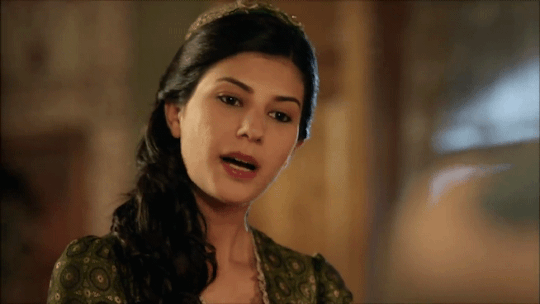


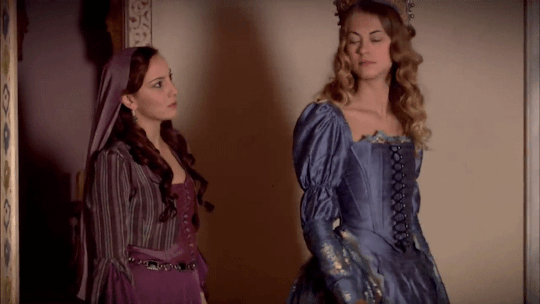
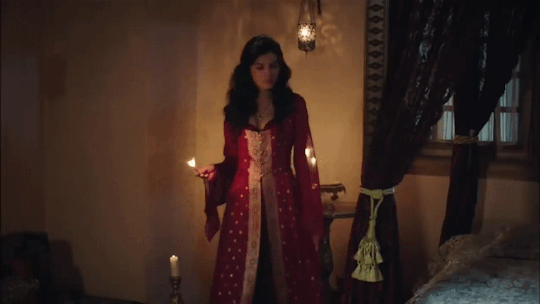

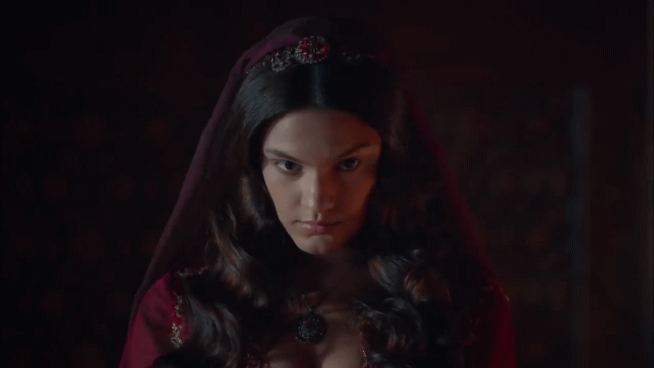
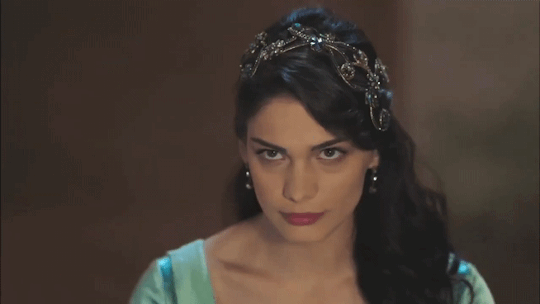
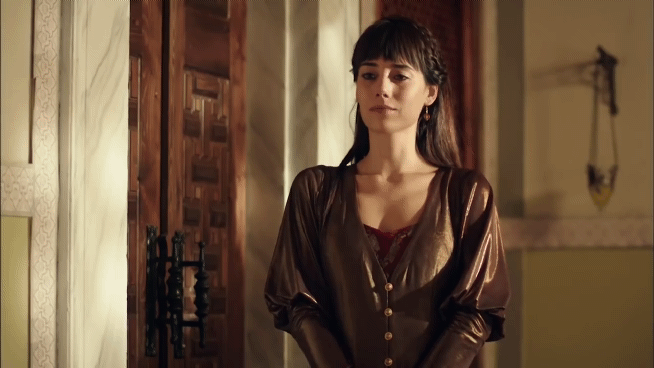

#history#magnificent century#muhteşem yüzyıl#ottoman#ottoman history#Hatun#Firuze hatun#Tania hatun#Fidan hatun#Concubine#Defne hatun#meleksima hatun#Valeria hatun#gulnihal hatun#Victoria hatun#Hatuns#Harem women
36 notes
·
View notes
Text
Mahidevran letting Nergisşah go to live her own life in E129 is an awesome and significant character moment. It shows that she has grown enough to let go of a person of unconditional and actually understanding support she would otherwise crave back in S01, back in the more "low-scale" and personal circumstances where she would constantly tell the people she relied on to help her, protect her, be there for her, to not leave her alone. Now that she has gotten over the former pain and has to deal with a new, even more hard hitting one, along with very unfavorable outward circumstances where she has debts and it's possible for her to not manage it at all, this is not present anymore. She's totally willing to put herself and her own feelings of resentment behind in order for her granddaughter to have a new, better and happier life and not stay and "wither" with her, no matter how much Nergisşah wanted to. Despite of the marriage being arranged by Sultan Süleiman, it's not really about going because it's an order by him. Mahidevran already follows the orders solely for a personal drive and motive, not because she's obliged to, as seen in E124. She has already come to terms with what's happening and wants Nergis to embrace the chance of a better future. She doesn't want for her to forget her loved ones (telling her to name her future son after her father), but is still going to let her progress regardless, not put her on a standstill to "sink in this mourning" in order to have someone to talk with or vent in front of. It certainly might have been a hard decision to make, judging by the sad look she gave Fidan when Nergisşah expressed her objection and the moment of silence before her response - it's not easy to let go of someone you love and that loves you so dearly. But Mahidevran has already gained the inner will and strength to handle this, wishing the best for her support network from Manisa that truly helped her rise up from the ashes of the harem's toxicity and gain more agency.
The same goes for Mahidevran wanting to let Fidan go, too, a bit later, which amounts to her refusing the ways of the system. While the other servants left because they had to go with Nergisşah, Mahidevran could've easily not made the offer to Fidan to go as well, for her to have at least one more pair of eyes and ears to listen and help, but she made it anyway. And she let her stay not because she wanted her near her at all costs, but because such amount of loyalty wasn't something she expected in that moment. It could even be paralleled to Hürrem and Sümbül in some way.
#support systems have always played an inportant part of Mahidevran's character#something she wanted to desperately have and never truly could#despite of how much she values Ibrahim Valide and Hatice and how hard they try#until she gets support in Manisa in a calmer environment where she could be more herself and her capabilities#and creating a family of her own#so it takes something out of you to let go of part of that after so much loss#magnificent century#muhteşem yüzyıl#muhtesem yuzyil#mahidevran sultan#nergisşah sultan#fidan hatun#*important
27 notes
·
View notes
Text
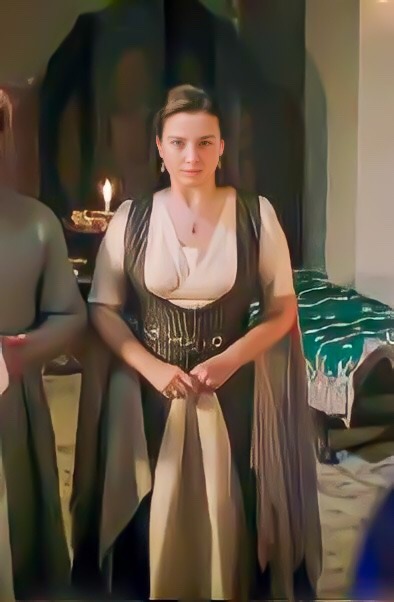
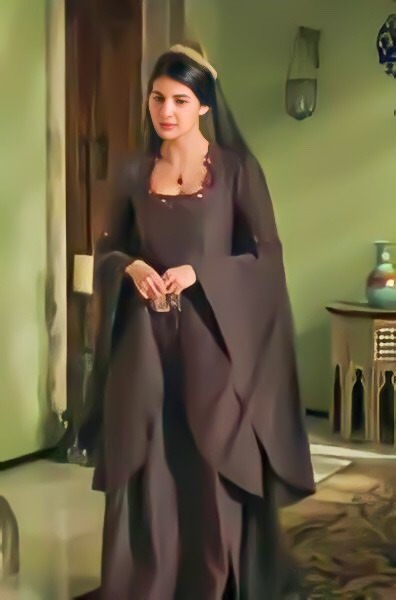
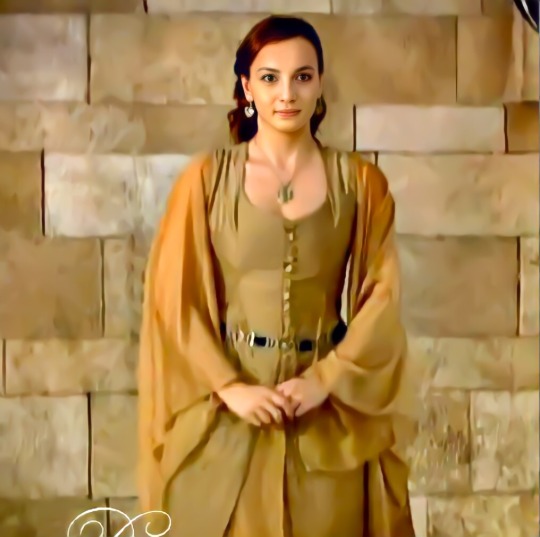
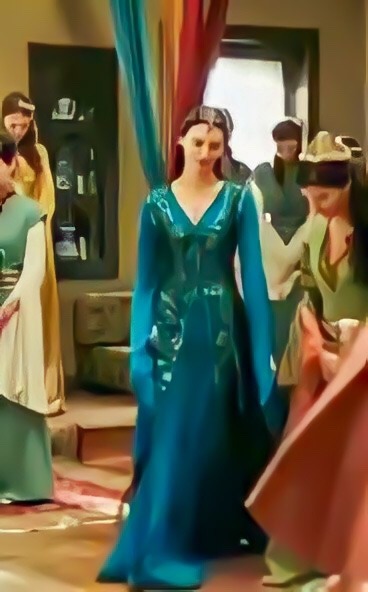
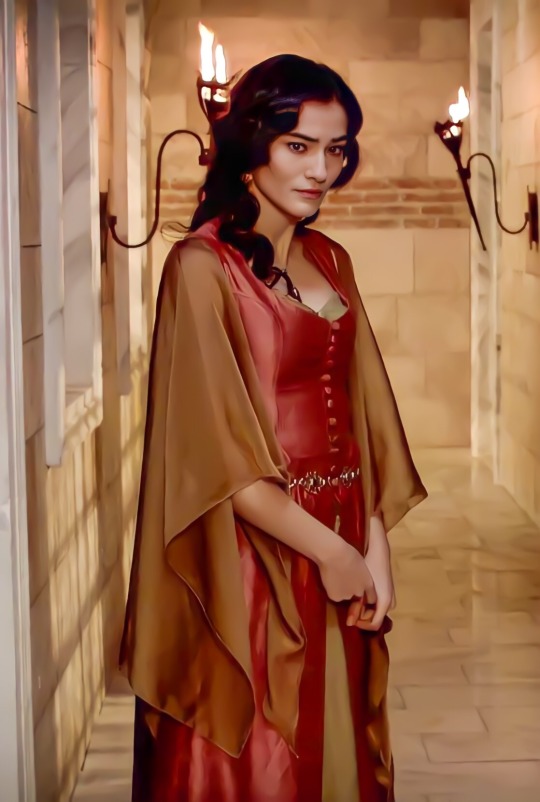

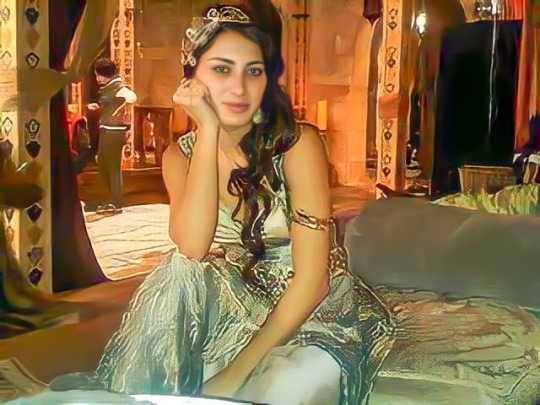

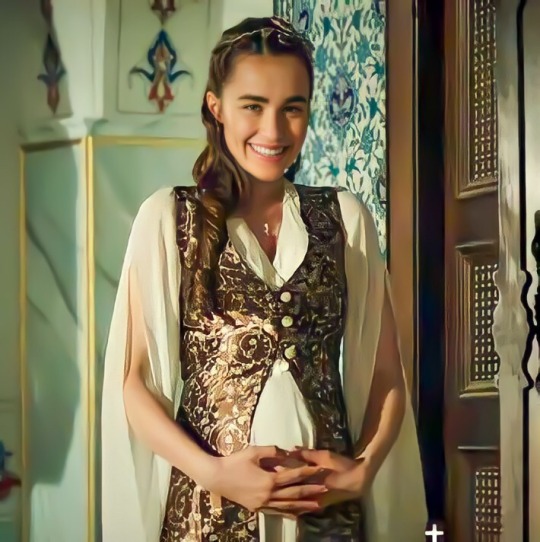
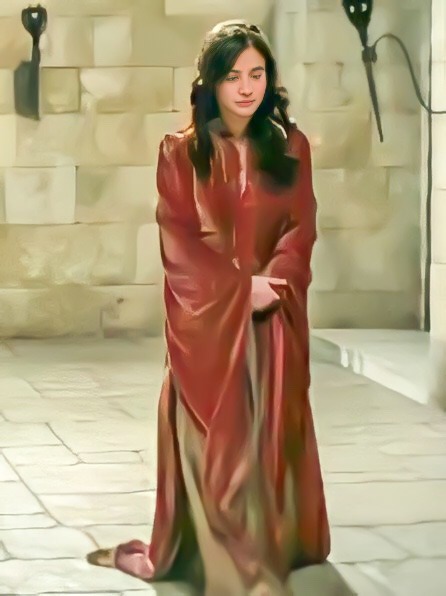
Hatuns promo pics part 3
#costume drama#every episode#costume#muhtesem yuzyil#magnificent century#every hatun costume#rana hatun#Ayse hatun#rümeysa hatun#Fatma hatun#dilsah hatun#gulsah hatun#gulnihal hatun#fidan kalfa#Sadika hatun#hatuns
24 notes
·
View notes
Note
Views on how writers showed origin slave sultanas in both shows for their backstory.
That’s interesting ask cause I’ve always thought on how different each one of them is portrayed and how this portrayal is supposed to make us feel about them.
The one who is given the most sob story is Hurrem sultan without a doubt. MY starts with 2 scenes first SS ascension and second is showing Hurrem fighting with her kidnappers then a flashback of how she was kidnapped. Now I know one would say well Hurrem is the lead here of course they are gonna show more of her compared to others. Yeah sure but there is a difference between deeply exploring the character which this story is kinda built about and giving your character a sob story while ultimately portraying the other as completely heartless. And yes I am talking about Mahidevran sultan , I was kinda annoyed how the writers completely acted oblivious to the fact that everything Hurrem went through due to slavery and kidnapping is probably the same for Mahi. But no generally the fandom sympathizes with Hurrem story , cause she is the only character that got one, Hurrem stans excuse for some of Hurrem’s actions is that Hurrem was kidnapped completely ignoring that same could be said about Mahi . Another point of contrast between how they were both portrayed is (aside from Mahi ridiculously being favored by royals) that from day 1 Mahi is referred to as “Sultan” because she birthed SS a heir while Hurrem who also birthed SS a heir was still referred to as “Hatun” , she was still referred to as such until she probably birthed Selim (who was undoubtedly a game changer to his mother). It is shown that again Hurrem has to fight for everything within her own while we aren’t shown that with Mahi. So generally huge aspect of Hurrem’s character is her past trauma and how she got over it and personally I am not mad that her trauma is acknowledged and talked about. Huge aspect of Mahi’s character is her coping with SS’ neglect and later the final nail in the coffin is Mustafa’s death, but because Mustafa died later , for so long it was just her coping with neglect and not showing any signs of strength as Hurrem did. Which to me is pure writing favoritism they gave Hurrem a lot of complex features while Mahi is given that she is just a depressed woman fighting till no end and gain getting weaker in the process. Have anyone ever saw the fandom bringing the fact that Mahi was kidnapped and enslaved as a sympathy factor cause personally I haven’t.
The next Sultana of MY is Nurbanu sultan in SO4. Since again MY is majorly built around Hurrem sultan (I mean the show is ridiculously rushed by her death) and SS in SO4 they aren’t acknowledging miseries of slaves in SO4 like they did in SO1 simply because they wanted the most sympathy to go to Hurrem and will later want us to hate Nurbanu so her past story wasn’t as explored but still explored. The approach of Hurrem’s and Nurbanu’ stories is very different. In Hurrem’s case it is more like a little poor girl kidnapped by tatars who lost her family at such a young age like poor girl (yeah poor girl I ain’t complaining) but with Nurbanu she is more portrayed as an entitled princess having valeria as a slave and can’t cope with the fact that she went from being a princess to a slave when you compare Hurrem crying because she is missing her parents vs Nurbanu crying because she is no princess anymore while both imo are valid and no one should be slave , you are just bound to sympathize more with Hurrem. Also to be revealed later Nurbanu is an illegitimate daughter and wasn’t as luxurious as she said add more to her portrayal of being entitled. Lastly Nurbanu is viewed as an opportunistic while Hurrem is the unconventional lover because Hurrem very fairy tale like fell into her lovers arms while Nurbanu chose selim as her prince because she after knowing Selim is going to manisa asked fidan what would that make him be and when she understood it meant he got a chance to ascend the throne she deadass-ly flew to Hurrem and begged her to be within Selim harem. While yes we are given that Selim saving Nurbanu is their first encounter it isn’t that romantic nor is it shown as the final nail in the coffin as to why she went for selim.
Ehhhh
For MYK. Writers completely fucked up this part. While Hurrem growth from her trauma is more gradual, Kosem sultan’s growth happened in the worst way possible. Anastasia (which is played by Anastasia) started off strong as hell , the strongest view TIMs ever gave about slavery and its trauma. Girlie bit ahmed’s hand , scolded him for having her photo in his room as if she is an object, called him barbaric for trying to kill his brother, overall shitted on this Dynasty. She started to gradually love Ahmed but didn’t completely forget about her roots , her choice of not running away came from her loving him (I wanted her to run away but due to historical shit they had to make her stay). Now fast forward to Beren playing Kosem and how her roots being became irrelevant all of a sudden. Ik the change of actress is to showcase a very rushed growth from Anastasia to Kosem , which I am not the one to particularly cry over actresses, but in this case it valid to scream and threw a tantrum because the “growth” happened…because Ahmed didn’t die? Like did the writers go like “we will change actresses and viewers should automatically throw all the aspects the character had with the previous actress”. For this to not be shitting on the writers party, Kosem back story becomes irrelevant to her upcoming actions , she makes it obvious she is trying to hurt Safiye because Safiye is trying to hurt her husband , kidnapped her son for some good minutes and because Safiye is overall a corrupt person. The incident with her father to me just happened to habe something to blackmail Kosem to sell Handan cause otherwise she wouldn’t have done it. Kosem roots and her being Anastasia is brought again in MYK2 when she “kills” Ibrahim. I know that without a doubt Kosem character cannot be build around her roots because she is not given this venerable and loving archetype she is more of a strict and sometimes ruthless person (I don’t agree she is mummy but that’s how they try to portray her) , however, I wished there was more of a logical development as to what made her into this “ruthless” person.
The remaining two are Gulbahar sultan and Ayse sultan. Ayse sultan was written exactly like Mahi but given more pathetic aspects and that’s it. Gulbahar too like mahi she isn’t given any backstory other than she was exiled and stayed away from her son because she tried to dethrone murad again giving us a reason to not sympathize with her(ngl I am halfasssing these two cause I am tired lol)
Anyway, if you’ve made it this far, thank you!
#sulieman the magnificent#magnificent century#magnificent century kosem#muhteşem yüzyıl kösem#hurrem sultan#mahidevran sultan#nurbanu sultan#kosem sultan#I am so talkative wtf
12 notes
·
View notes
Text
Non real life sultanas
A little Christmas surprise post comes. One of my most popular videos on Youtube was the one, where I gathered non-historical characters, explaining how fictional or how historical they were, and if there was a real historical person behind them as an inspirer. Now, for Christmas, I would like to summarize for you the main fictional characters of the Muhteşem Yüzyil series.
Several fictional characters were present in the Muhteşem Yüzyil series, many from the very first minutes. The presence of some fictional characters was forgivable, as we were left with very little detailed information about the harem of Sultan Suleiman I. Thus, for example, the characters of Sümbül Agha, Gül Agha, Mercan Agha, and other eunuchs, although not portraying historical characters, were necessary for the dramaturgy of the series. Sümbül's character was the most important among the eunuchs and perhaps this is why many of us may think that Hürrem actually had such a close friend in the person of the chief eunuch. However, this is not true. During Suleiman's reign, many chief eunuchs took turns, and none of them were known to be particularly close to Hürrem. Of Hürrem's close servants, only one is known by name, a woman named Nevbahar. The characters of Nigar Kalfa, Gülsah Hatun, Fidan Hatun, Daye Hatun, Fahriye Kalfa were similar to Sümbül. None of them were historical, but surely every sultana had their own trusted servants, as they showed in the series. Like the eunuchs and kalfas, the concubines of Prince Mustafa and Prince Bayezid, Ayşe, Rana, Defne or Rumeysa Hatun, can also be considered forgivable fictional characters. We do not know anything about the harem of the two princes as neither of them had a major consort and as their children were born from different women.
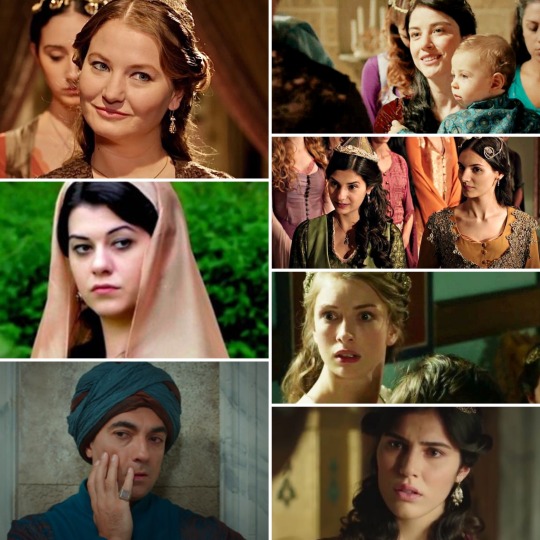
However, there were also characters who were written into the story just for the sake of the drama. Which of these characters was acceptable is up to everyone and feel free to write your opinion about them in a comment here or on another platform! So here's the long-awaited list:
Sadika Hatun
Sadika was a Hungarian woman in the series whose husband was killed by Sultan Suleiman on the day of their wedding. Sadika then became the spy of the Hungarian king, Lajos II and she traveled to Istanbul to personally avenge her husband’s death. Matrakci Nasuh Efendi then, by chance, meets the girl and helps her get into the harem, where she immediately joins Ayşe Hafsa Valide Sultan's service and then becomes Hatice Sultan’s chief servant. During her job, of course, she gets close to Suleiman's bed several times, and then she had the opportunity to attack the sultan. However, she does not succeed, Suleiman survives, and Sadika is thrown in the Bosphorus.
In reality, this story would not be possible at all. Even if we assumed that Sadika really existed and Suleiman actually killed her husband, she would not have been able to get into the Sultan's harem and take revenge. On the one hand, Sadika was already a married woman, an adult woman. Such women could not enter the harem, only virgin, child girls could become the sultan's later concubines. However, even if Sadika had somehow been able to get in the harem, a long education would have awaited her before she could join the Valide Sultan's service. While there may have been some exceptional cases where older or non-virgin women wanted to be gifted to the Sultan, these are special cases. Such was the case, for example, when Hayreddin Barbarossa wanted to kidnap the beautiful Giulia Gonzaga, a widowed Italian noblewoman known far and wide, to send her to the Sultan's harem as a gift. In the end, he didn’t succeed, but even if he did, we don’t know if the sultan would had ever taken the woman to his bed.
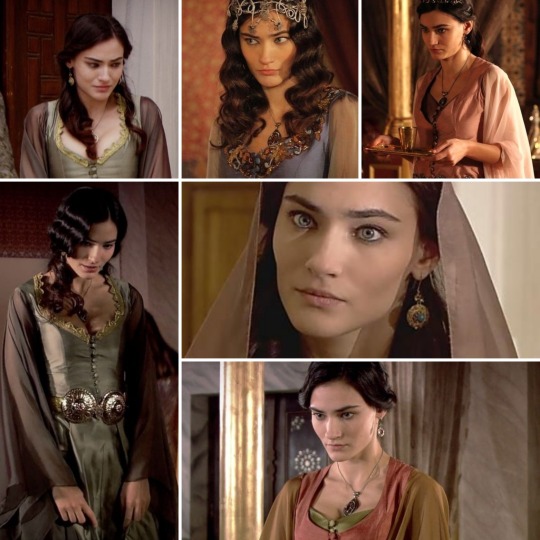
Leo
In the series, he was the love of Hürrem from their youth. Leo came to Istanbul with the goal of finding her former sweetheart. Leo is a talented artist who, with the help of Nasuh Efendi (ahh Nasuh brought all the good people near to the Sultan…) will become the painter of Sultan Suleiman and Pargali Ibrahim. His former relationship with Hürrem will soon be revealed to Pargali Ibrahim, who is thus trying to blackmail Hürrem. Hürrem repeatedly begs Leo to leave the capital, but the man remains, which eventually leads to his death.
In reality, Hürrem - and all the other concubines - were taken into Ottoman captivity as little girls, so it is out of the question that they would have had a love or a fiance. And even if they had, they could never have found them. Nasuh Efendi, though one of the greatest suckers in the series - yet the dearest character - was not like that in reality at all, but he was a wonderful scholar who, by the way, was not so closely friends with either Sultan Suleiman or Pargali Ibrahim.
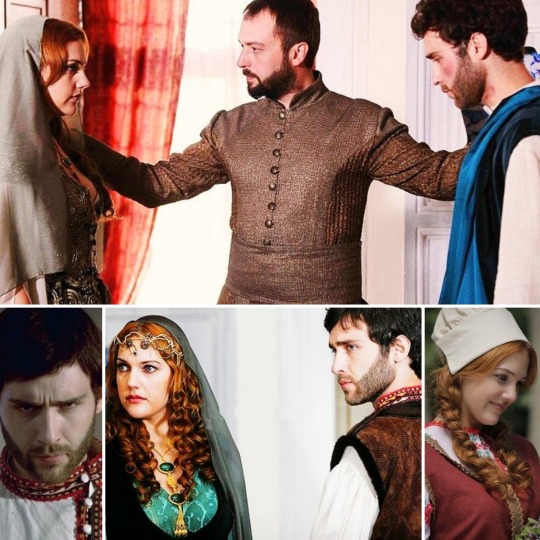
Princess Isabella
Princess Isabella Fortuna was a Spanish noble lady in the series who was on a ship to her future husband, the Austrian prince, when she was captured by Ottoman pirates and was taken to Istanbul to Sultan Suleiman. At first, Suleiman was only interested in the princess for political reasons, but later he fell in love. Princess Isabella initially resisted Suleiman's approach with all her cartilage, but over time she fell in love with the sultan and became his lover. This, of course, Hürrem could not stand and did everything she could to get rid of the princess who was eventually sent home by Suleiman himself.
In reality, of course, such a situation would have been unthinkable. Even assuming that Isabella existed and was captured by pirates, no princess raised in the Catholic faith would have voluntarily become the concubine of a Muslim sultan, she would have committed suicide instead. Let us not forget that Suleiman was loyal to Hürrem from the 1520s onwards, so in reality there was not a single woman who could make hard time for Hürrem during her decades-long relationship with Suleiman. Isabella Fortuna, on the other hand, never existed. Surprisingly, however, they could have patterned her from a real character. There was an Isabella of Castile in this period who was born in 1518 as the child of the widowed Queen of Aragon, Germaine of Foix and Charles V, but she was never captured by Ottoman pirates and was never the bride of the Austrian prince. Isabella's existence was kept secret by her parents all her life, only her mother's testament revealed that she ever existed. It is also known from there that Isabella died young in 1537.
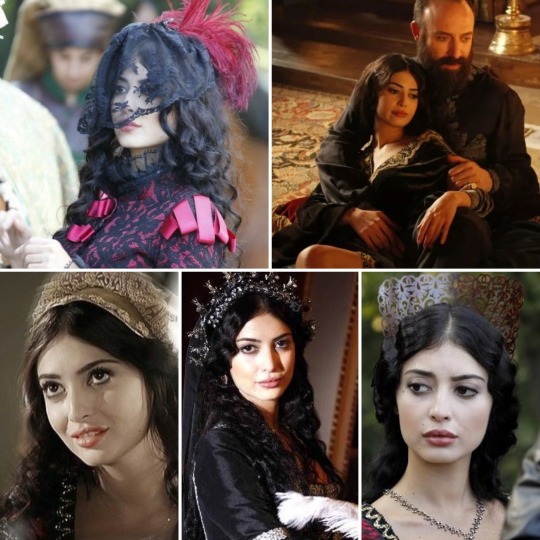
Aybige Hatun
In the series, Aybige was the niece of Ayşe Hafsa, and so the daughter of the Crimean Sahib Giray khan. Aybige originally only came to visit her aunt in Istanbul, but later Hafsa Sultan wanted to see her as the wife of her favorite grandson, Prince Mustafa. However, Aybige was in love with Bali Bey and Mustafa longed for someone else aksi. Bali Bey was eventually almost executed for their love, and Aybige returned to Crimea with her father in the end.
Aybige’s storyline makes mistakes at almost every point. First, Ayşe Hafsa was never the sister of the Crimean khan, so the daughter of the Crimean khan could not have been her niece either. In addition, although Sahib Giray Khan had several daughters, none were called Aybige and none of his daughters ever traveled to Istanbul. The only true point in the whole storyline is that Sahib Giray Khan really collaborated with Sultan Suleiman in his Moldovan war. It is also important to mention Bali Bey at this point. Although Bali Bey was a real historical figure, there is not the slightest match between historical Bali Bey and the series Bali Bey. The real Bali Bey was not a romantic guy who fell in love with every second woman. Bali Bey was a cruel warlord. And if it comes to Bali Bey, let’s say a few words about Prince Mustafa as well. The idea of wanting to marry Mustafa to a khan’s daughter is completely absurd! Since the reign of Sultan Mehmed II, princes have been forbidden to marry anyone, so Prince Mustafa has not been allowed to marry anyone either. And the fact that Suleiman would have supported the idea - even if such a marriage had been able to occurre at all - is an even greater absurdity. Suleiman did not want Mustafa as his heir, so he would never have given him as much power as the support of the Crimean khan.
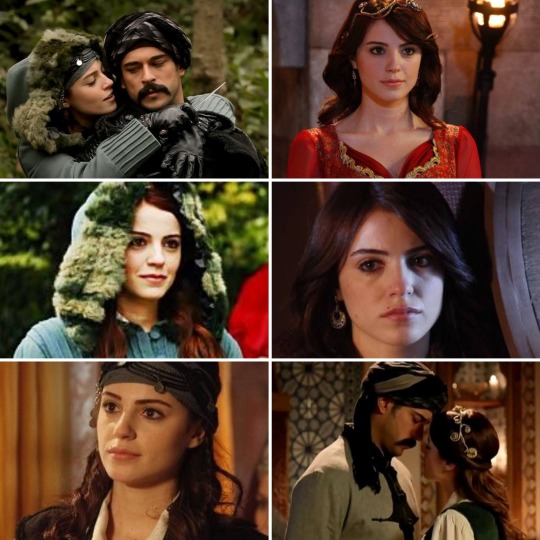
Firuze Hatun
In the series, Firuze was a Persian spy who, with her amazing abilities, was able to heal the pains of the sick Prince Cihangir, earning the love of Hürrem Sultan. Firuze, however, thanked Hürrem kindness in a disgusting way, and became Suleiman's secret lover, whom the sultan fell in love with. In the end, Hürrem was only able to overcome Firuzen with a little, Firuze was eventually exiled from the palace so she could return to Persia.
In reality, Suleiman was loyal to Hürrem, living in a monogamous relationship with her. Even if there was an occasional one-night-stands, Suleiman never fell in love with another woman, only Hürrem. Thus, the Firuze storyline has already failed here. The fact that there was a Persian spy in the harem would have been an interesting suggestion though. There were certainly spies in the royal court of every empire, but they were probably not hiding among the concubines. Eunuchs, for example, moved with much greater freedom, were much better candidates for being a spy…
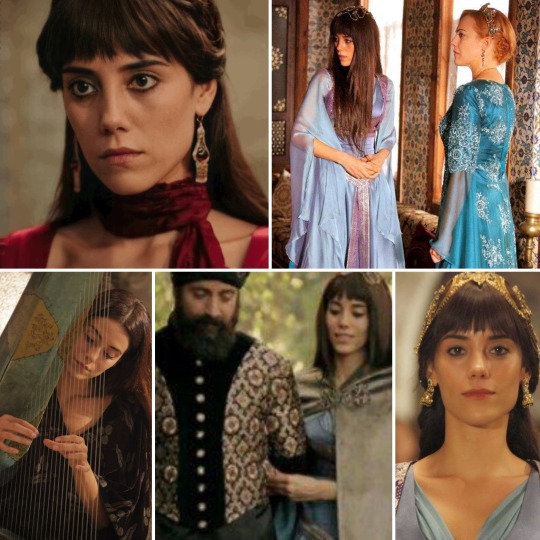
Huricihan Sultan
In the series, Huricihan was the daughter of Ibrahim Pasha and Hatice Sultan, who grew up in the palace of Beyhan Sultan after the death of her parents. From there she returned to Istanbul, where she fell in love with her first cousin, Prince Bayezid. Their love became a relationship and then marriage without the Sultan’s permission. Huricihan became the head of Bayezid's harem and soon her relationship with Hürrem and Suleiman slowly became better. Huricihan's end eventually was brought by Prince Selim's concubine, Nurbanu, who knocked her out in the heat of a dispute, killing her.
In reality, Hatice and Ibrahim Pasha were never married, so they didn't have children either together, so Huricihan never existed. If she had existed, for the reasons already mentioned, it would have been utterly inconceivable for Bayezid to marry her, either secretly or openly. Especially knowing that Bayezid had never had a favourite singled out concubine, as all of his children were born to different women. With a background like this, it’s unlikely he’d ever wanted to marry anyone. Although Hatice Sultan did indeed have a daughter, she was born between 1510 and 1515, so she was well ahead of Bayezid in age, and of course she had nothing to do with the prince and was not even called Huricihan.
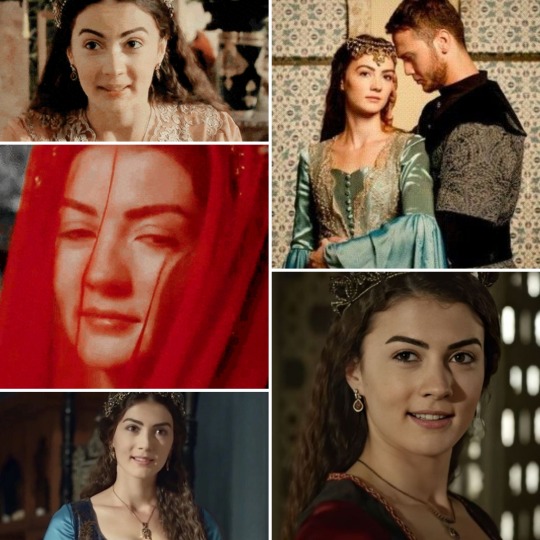
Mihrünissa Hatun
In the series, Mihrünissa was the daughter of Hayreddin Barbarossa the Head of the Fleet, whom her father sent to Prince Mustafa as a consultant. Later, the two young person fell in love with each other and married without the Sultan's knowledge. In time, Mihrünissa also gave birth to Mustafa's son Mehmed. After Prince Mustafa and his son Mehmed were executed, Mihrünissa went to the capital and cut her own throat before Hürrem's eyes.
In reality, for the reasons already detailed several times above, no prince could marry anyone, so Mustafa also never married. In addition, Barbarossa never had a daughter named Mihrünissa and Hayreddin Pasha was never a supporter of Prince Mustafa. However, even assuming that Mihrünissa existed, there is no chance that she could have committed suicide before Hürrem's eyes. Prince Mustafa's harem retired to Bursa, so that no member of the harem could travel to the capital, especially not to the palace and kill herself in front of Hürrem. So, in fact, the Mihrünissa storyline was just 100% fiction.
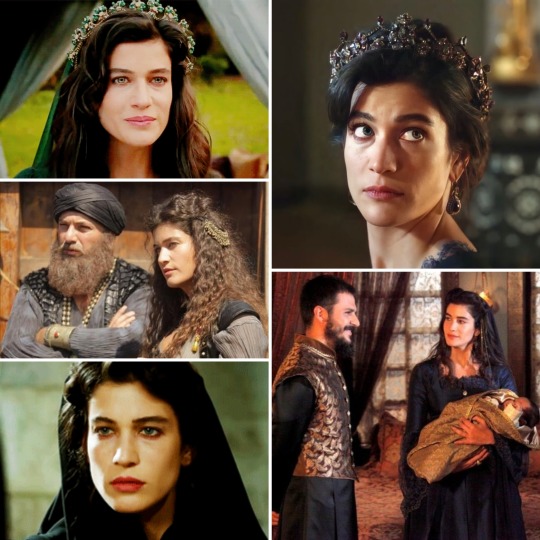
Nazenin Hatun
In the series, Nazenin arrived in Istanbul with Nurbanu, where Hürrem, who was struggling with menopause, sent her to the sultan herself. Nazenin thus became the sultan's concubine and soon gave birth to a daughter, Raziye Sultan. Eventually, on Hürrem's instructions, she was killed by Nurbanu.
In reality, as I have said many times, Suleiman was loyal to Hürrem. In addition, after the birth of Prince Cihangir in 1531/2, Suleiman had no more children, neither to Hürrem nor to anyone else. It is true that he had a daughter named Raziye, however, the child died in 1520 at the age of a few years as a result of an epidemic.
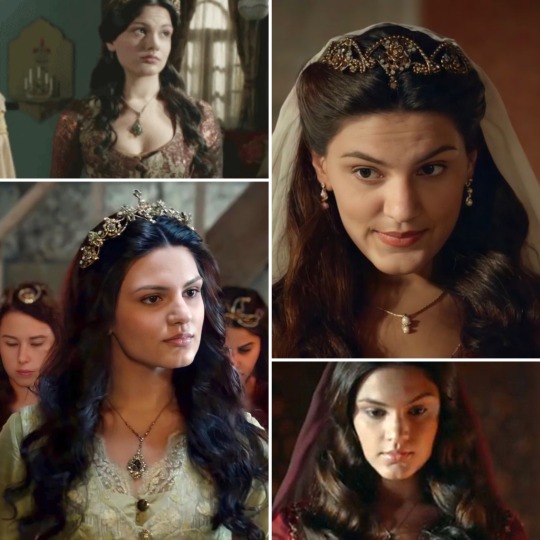
Surprising realities
After many fictional characters, one would think that all eunuchs and kalfas were fictional characters, as we know quite a bit about the harem. However, this is not true! There were some historically inspired characters, such as Gazanfer Agha, who, although existed and was one of the most influential eunuchs ever, was not a loyal man of Nurbanu, but Sultan Selim II. Gazanfer reached the peak of his career, by the way, during the reign of Safiye Sultan.
Similarly historical was Canfeda Hatun, who was Nurbanu’s most loyal servant and one of the most influential kalfas of her era. True, Canfeda’s character in the series was a fusion of two loyal servants of historic Nurbanu. In her young age, in the princely harem of Selim, Nurbanu became acquainted not with Canfeda but with another kalfa, who remained her faithful servant for the rest of her life. Canfeda only became Nurbanu’s main supporter during Selim’s reign.
Like them, Afife Hatun’s character was partly real also. Sultan Suleiman's wetnurse was really called Afife and the sultan always kept in touch with the woman. However, Afife Hatun never moved to Istanbul to rule the Sultan’s harem, but lived a simple life.
Gracia Mendes Nasi was introduced last season as a wealthy Portuguese Jewish woman who helped Portuguese refugees get to Istanbul. Later, Gracia became the lover of Grand Vizier Rüstem Pasha, which made her an enemy of Mihrimah Sultan. In reality, Gracia Mendes was a very benevolent soul who was committed to Jewish traditions and her Jewish brothers. She was never a lover of Rustem and an enemy of Mihrimah. However, like the series, Gracia actually enjoyed the Sultan’s support and, with his help, she made great improvements in Istanbul’s Jewish Quarter and helped many refugees start a new life in the Ottoman Empire.
One of the most interesting guest actors of the last season of the series was Anna Jagello, the daughter of the former King of Poland, the sister of the new King of Poland. Although the woman was a real historical figure, the historical Anna never traveled to Istanbul and never corresponded with Hürrem Sultan. However, Hürrem exchanged letters several times with Anna's mother Bona Sforza, Anna's father, King Sigismund I of Poland, and Anna's brother, the later Zsigmond Ágost II king of Poland, and even Anna's sisterm Isabella, the Hungarian queen. Thanks to the intercession of Hürrem, the relationship between the Kingdom of Poland and the Ottoman Empire was quite good and almost friendly during Suleiman's reign.
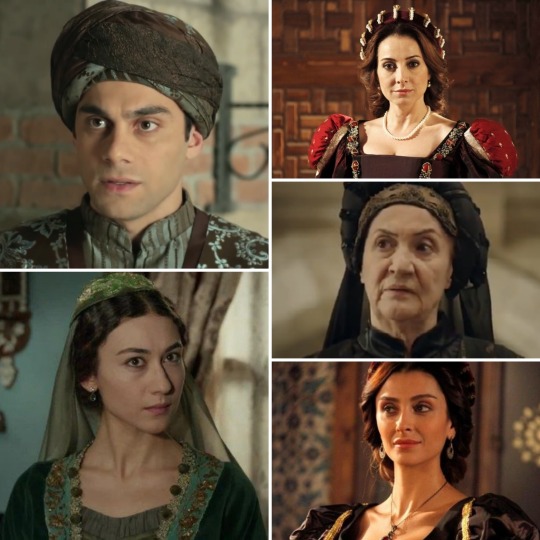
* * *
Egy kis karácsonyi meglepetés poszt következik. Youtube-on az egyik legnépszerűbb videóm az volt, amelyben a nem történelmi karaktereket gyűjtöttem össze, elmagyarázva, mennyire voltak kitaláltak, mennyire volt mögöttük egy-egy valós történelmi személy, mint ihlető. Most karácsony alkalmából szeretném nektek összefoglalni a Muhteşem Yüzyil sorozat főbb kitalált karaktereit és történetüket.
A Muhteşem Yüzyil sorozatban több kitalált karakter is jelen volt, sokan már az első percektől kezdve. Egyes kitalált karakterek jelenléte megbocsátható volt, hiszen nagyon kevés részlet maradt ránk a Szulejmán háremében jelenlévő személyekről. Így például Sümbül Aga, Gül Aga, Mercan Aga és más eunuchok karakterei bár nem valódi személyeket keltenek életre, szükségesek voltak a sorozat dramaturgiája szempontjából. Sümbül karaktere volt a legfontosabb az eunuchok között és talán emiatt sokan gondolhatjuk úgy, hogy Hürremnek a valóságban is volt egy ilyen közeli barátja a fő eunuch személyében. Azonban ez nem igaz. Szulejmán uralkodása alatt rengeteg főeunuch váltotta egymást és egyikről sem ismert, hogy különösebben közel álltak volna Hürremhez. Hürrem közeli szolgálói közül csupán egy ismert név szerint, egy Nevbahar nevű nő. Sümbülhöz hasonló volt Nigar Kalfa, Gülsah Hatun, Fidan Hatun, Daye Hatun, Fahriye Kalfa karaktere is. Egyikük sem valós személy volt, ám bizonyosan minden szultánának megvoltak a saját megbízható szolgálói, ahogy ezt a sorozatban is mutatták. Hasonlóan az eunuchokhoz és kalfákhoz megbocsátható füllentésnek tekinthetőek Musztafa herceg és Bayezid herceg ágyasai is, Ayşe, Rana, Defne vagy Rumeysa Hatun. A két herceg asszonyairól ugyanis semmit sem tudunk, egyiküknek sem volt kiemelt jelentőségű főágyasa, gyermekeik más-más nőktől születtek.
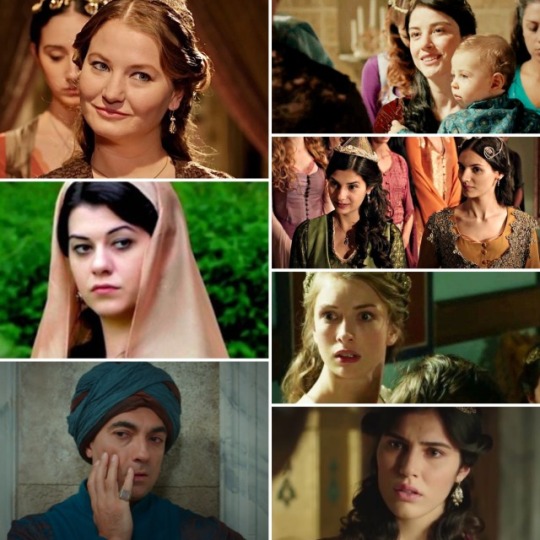
Voltak azonban olyan karakterek is, akiket csupán a dráma kedvéért írtak bele a történetbe. Az, hogy ezek közül melyik karakter mennyire volt elfogadható, azt mindenki maga döntse el és nyugodtan írja meg kommentben itt vagy más platformon, hogy mit gondol róluk! Következzék hát a várva várt lista:
Sadika Hatun
Sadika a sorozatban egy magyar nő volt, akinek férjét az esküvőjük napján megölte Szulejmán szultán. Sadika ezek után a magyar király, II. Lajos parancsára Isztambulba utazott, hogy ott személyesen bosszulja meg férje halálát. Matrakci Nasuh Efendi aztán egy véletlen folytán megismerkedik a lánnyal és segít neki bekerülni a hárembe, ahol azonnal Ayşe Hafsa Valide Sultan szolgálatába áll, majd Hatice Sultan főszolgálója lesz. Menetközben természetesen többször is Szulejmán ágyának közelébe kerül, majd lehetősége nyílik a szultánra támadni. Azonban nem jár sikerrel, Szulejmán életben marad, Sadikát pedig a Boszporuszba fojtják.
A valóságban ez a történetszál egyáltalán nem lenne lehetséges. Ha feltételeznénk is azt, hogy Sadika valóban létezett és Szulejmán valóban megölte a férjét, akkor sem állt volna módjába bejutni a szultáni hárembe és bosszút állni. Egyrészt Sadika férjezett asszony volt már, felnőtt nő. A hárembe nem kerülhettek be ilyen nők, csupán szűz, gyermeklányokból válhattak a szultán ágyasai. Mindazonáltal ha Sadika valahogy mégis bekerült volna a hárembe hosszadalmas oktatás várt volna rá, mielőtt a Valide Sultan szolgálatába állhatott volna. Előfordulhatott ugyan néhány kivételes eset, amikor idősebb vagy nem szűz nőket akartak volna a szultánnak ajándékozni, azonban ezek különleges esetek. Ilyen volt például, amikor Hayreddin Barbarossa el akarta rabolni a messze földön ismert, gyönyörű Giulia Gonzagát, megözvegyült itáliai nemesasszonyt, hogy a szultán háremébe küldje ajándéknak. Végül nem járt sikerrel, ám ha sikerrel járt volna is, nem tudni, hogy a szultán valaha is ágyba vitte volna-e a nőt.
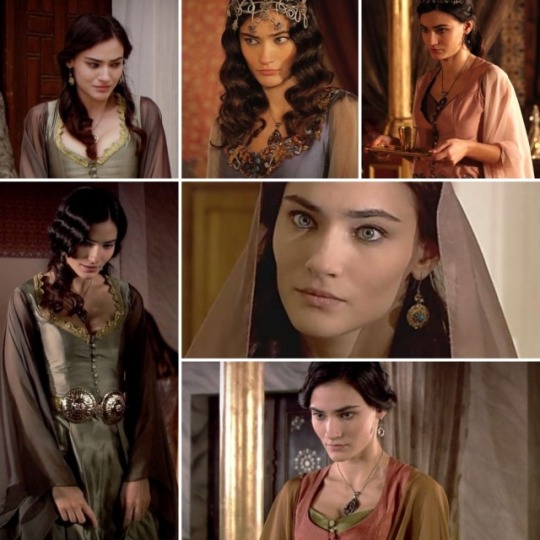
Leo
A sorozatban Leo Hürrem fiatalkori szerelme volt, aki azzal a céllal érkezett Isztambulba, hogy megtalálja egykori kedvesét. Leo tehetséges művész, aki Nasuh Efendi segítségével (ahh Nasuh csupa jó embert juttatott a szultán közelébe…) Szulejmán szultán és Pargali Ibrahim festője lesz. Egykori viszonya Hürremmel hamarosan kiderül Pargali Ibrahim számára, aki ezzel próbálja zsarolni Hürremet. Hürrem többször könyörög Leonak, hogy hagyja el a fővárost, de a szerelmes férfi marad, ami végül halálához vezet.
A valóságban Hürrem – és minden más ágyas – még kislányként került oszmán fogságba, tehát kizárt, hogy szerelmük vagy vőlegényük lett volna, ha pedig mégis, az sosem tudott volna rájuk találni. Nasuh Efendi, pedig aki a sorozat egyik legnagyobb baleke – ugyanakkor legkedvesebb karaktere – a valóságban egyáltalán nem ilyen volt, hanem egy csodálatos tudós, aki egyébként nem állt ilyen közeli barátságban sem Szulejmán szultánnal, sem Pargali Ibrahimmal.
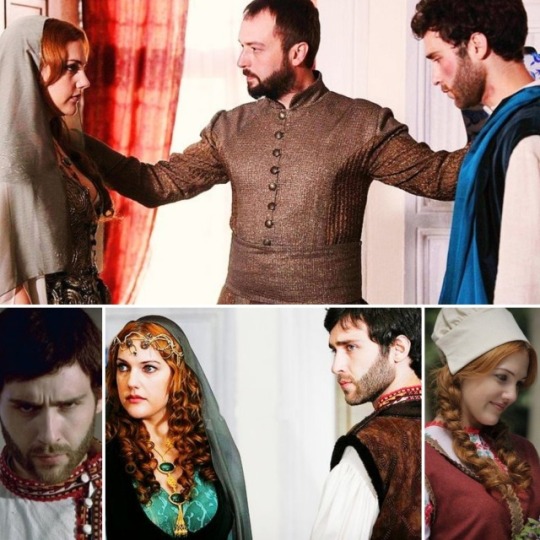
Izabella Hercegnő
Izabella Fortuna hercegnő a sorozatban egy spanyol nemes hölgy volt, aki éppen jövendőbeli férjéhez, az osztrák herceghez tartott hajón, mikor az oszmán kalózok elragadták és Isztambulba vitték Szulejmán szultán elé. Először Szulejmán politikai okokból érdeklődött csupán a hercegnő iránt, később azonban beleszeretett. Izabella hercegnő eleinte minden porcikájával ellenállt Szulejmán közeledésének, idővel azonban beleszeretett a szultánba és a szeretője lett. Ezt természetesen Hürrem szultána nem állhatta és mindent megtett, hogy megszabaduljon a hercegnőtől, akit végül Szulejmán küldött el.
A valóságban természetesen elképzelhetetlen lett volna egy ilyen szituáció. Ha feltételezzük is, hogy Izabella létezett és a kalózok fogságába esett, egyetlen katolikus hitben nevelt hercegnő sem vált volna szabad akaratából a szultán ágyasává, előbb lett volna öngyilkos. Azt se felejtsük el, hogy Szulejmán az 1520-as évektől kezdve hűséges volt Hürremhez, a valóságban nem volt egyetlen nő sem, aki éket verhetett volna közéjük több évtizedes kapcsolatuk alatt. Másrészről pedig Izabella Fortuna sosem létezett. Meglepő azonban, hogy valós karakterről mintázhatták. Létezett egy Kasztíliai Izabella ebben a korban, aki 1518-ban született az özvegy aragóniai királyné Germaine Foix és V. Károly gyermekeként, azonban sosem esett oszmán kalózok csapdájába és sosem volt az osztrák herceg menyasszonya. Izabella létezését egész életében titokban tartották szülei, csupán édesanyja végrendeletéből derült fény arra, hogy valaha is létezett. Innen tudni azt is, hogy Izabella fiatalon elhunyt 1537-ben.
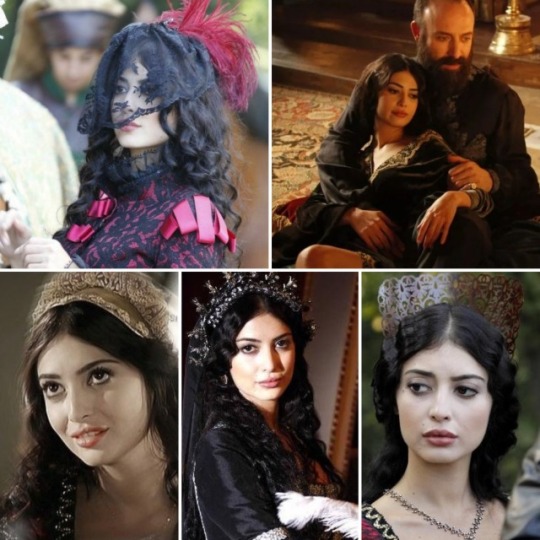
Aybige Hatun
A sorozatban Aybige Ayşe Hafsa Sultan unokahúga volt, a krími Sahib Giray kán lánya. Aybige eredetileg csak látogatóba érkezett Isztambulba, később azonban nagynénje szerette volna őt kedvenc unokája, Musztafa herceg feleségeként látni. Aybige azonban Bali Bégbe volt szerelmes és Musztafa is más után vágyakozott. Bali Béget végül majdnem kivégezték a szerelmük miatt, Aybige pedig apjával visszatért a Krímre.
Aybige történetszála szinte minden létező ponton hibádzik. Először is, Ayşe Hafsa sosem volt a Krími kán testvére, tehát a krími kán lánya sem lehetett az unokahúga. Emellett Sahib Giray kánnak bár több lánya volt, egyiket sem hívták Aybigének és egyik lánya sem utazott sosem Isztambulba. Az egész történetszál egyetlen igaz pontja, hogy Sahib Giray kán tényleg együttműködött Szulejmán szultánnal annak moldáv háborújában. Fontos megemlíteni ezen a ponton Bali Béget is. Bali Bég bár valós történelmi személy volt, de a legkisebb egyezés sincs a történelmi Bali Bég és a sorozat Bali Bége között. A valódi Bali Bég nem egy romantikus fickó volt, aki minden második nőbe beleszeretett, és akiért bolondultak a nők. Bali Bég egy kegyetlen hadvezér volt. És ha már Bali Bég szóba jött, ejtsünk néhány szót Musztafa hercegről is. Az ötlet, hogy Musztafát egy kán lányához akarják adni teljesen abszurd! II. Mehmed szultán uralkodása óta tilos volt a hercegeknek házasságot kötni, így Musztafa herceg sem köthetett senkivel házasságot. Az pedig, hogy Szulejmán támogatta volna az ötletet, már ha egyáltalán felmerült volna egy ilyen házasság, még nagyobb abszurdum. Szulejmán nem Musztafát akarta örökösének, így sosem adott volna a kezébe akkora hatalmat, mint a krími kán támogatása.
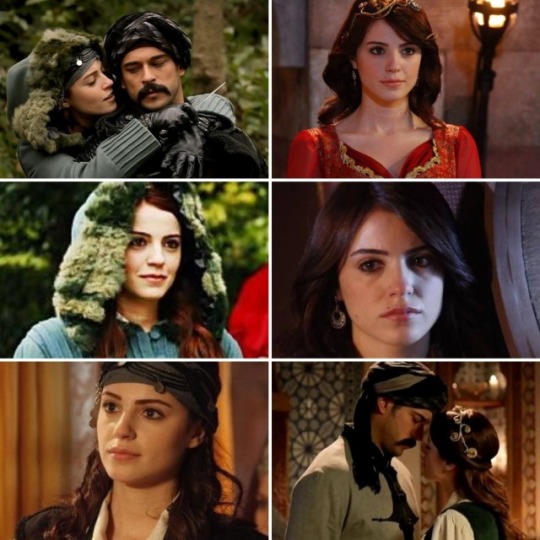
Firuze Hatun
A sorozatban Firuze egy perzsa kém volt, aki csodálatos képességeivel gyógyítani tudta a beteges Cihangir herceg fájdalmait, amivel kiérdemelte Hürrem szeretetét. Firuze azonban rút módon hálálta meg Hürrem kedvességét, ugyanis Szulejmán titkos szeretője lett, akibe a szultán halálosan beleszeretett. Végül Hürrem csak egy hajszállal volt képes felülkerekedni Firuzén, akit végül száműztek a palotából, így visszatérhetett Perzsiába.
A valóságban Szulejmán hűséges volt Hürremhez, monogám kapcsolatban éltek. Ha előfordult is alkalomadtán egy-egy egyéjszakás kaland, Szulejmán soha nem szeretett bele más nőbe, csak Hürremet szerette. Így a Firuze történetszál már itt el is bukott. A tény, hogy Firuze perzsa kém lett volna érdekes felvetés, bizonyára akadtak kémek minden birodalom királyi udvarába, azonban ők valószínűleg nem az ágyasok között rejtőztek. Az eunuchok például, sokkal nagyobb szabadsággal mozogtak, sokkal könnyebben lefizethetők voltak…
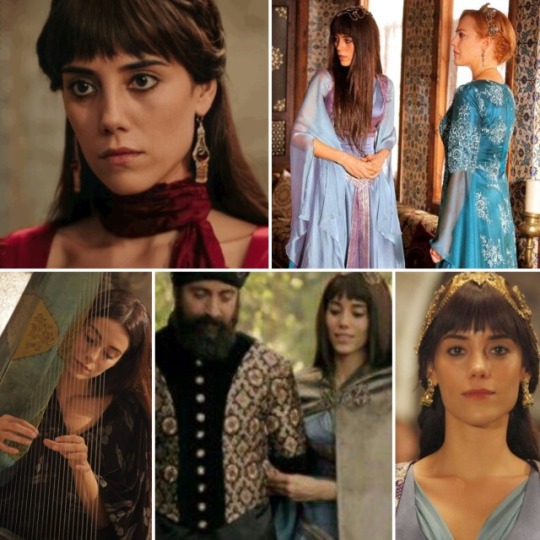
Huricihan Sultan
A sorozatban Huricihan Ibrahim Pasa és Hatice Sultan lánya volt, aki szülei halála után Beyhan Sultan palotájában nevelkedett. Onnan tért vissza Isztambulba, ahol beleszeretett elsőunokatestvérébe, Bayezid hercegbe. Szerelmükből kapcsolat, majd házasság lett a szultán engedélye nélkül. Huricihan Bayezid háremének feje lett és kapcsolata lassanként rendbejött Hürremmel és a szultánnal is. Huricihan végzete végül Szelim herceg ágyasa, Nurbanu lett, aki egy vita hevében leütötte őt, ezzel megölve.
A valóságban Hatice és Ibrahim Pasa sosem voltak házasok, így gyermekük sem született, tehát Huricihan sosem létezett. Ha létezett volna is, a már korábban említett okokból teljesen elképzelhetetlen lett volna, hogy Bayezid feleségül vegye őt akár titokban, akár nyíltan. Különösen tudva, hogy Bayezidnek nem volt sosem kiemelt ágyasa, minden gyermeke más nőtől született. Ilyen háttérrel nem valószínű, hogy valaha is feleségül akart volna venni bárkit. Hatice Sultannak bár valóban volt egy lánya, az 1510-1515 között született, így korban jóval megelőzte Bayezidet, és természetesen sosem volt semmi köze a herceghez és nem is Huricihannak hívták.
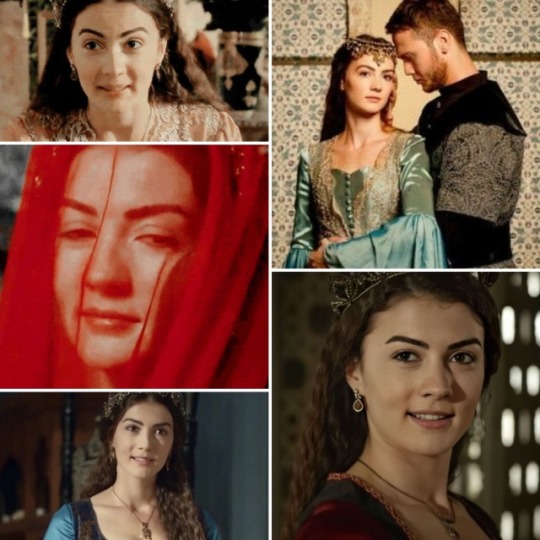
Mihrünissa Hatun
A sorozatban Mihrünissa Hayreddin Barbarossa flotta parancsnok lánya volt, akit édesapja küldött Musztafa herceg mellé tanácsadónak. Később a két fiatal egymásba szeretett és a szultán tudta nélkül egybe keltek. Idővel Mihrünissa életet adott Musztafa fiának, Mehmednek is. Miután Musztafa herceget és vele együtt fiát, Mehmedet is kivégezték, Mihrünissa a fővárosba ment és Hürrem szeme láttára elvágta a saját torkát.
A valóságban a már fent többszörösen részletezett okok miatt egy herceg sem köthetett házasságot, így Musztafa sem nősült meg soha. Emellett Barbarossának sosem volt Mihrünissa nevű lánya és Hayreddin Pasa sohasem volt Musztafa herceg támogatója. Ha azonban feltételeznénk is, hogy Mihrünissa létezett, nincs arra esély, hogy Hürrem szeme láttára lehetett volna öngyilkos. Musztafa herceg háreme Bursába vonult vissza, így a hárem egyik tagja sem utazhatott egyetlen percre sem a fővárosba, nemhogy a palotába, Hürrem elé. Így tulajdonképpen a Mihrünissa történet-szál 100%-ban kitaláció volt.
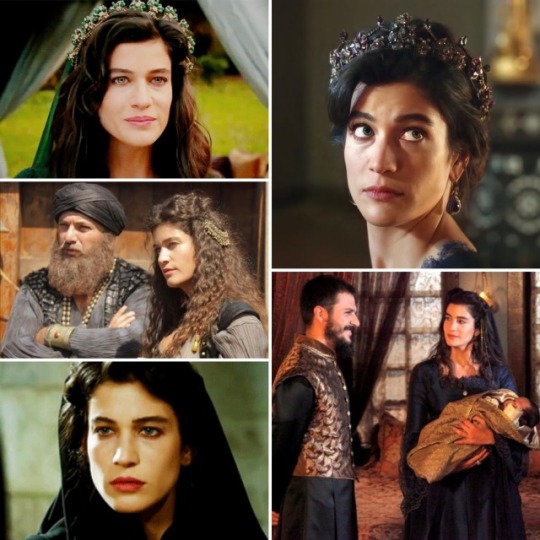
Nazenin Hatun
A sorozatban Nazenin Nurbanuval együtt érkezett Isztambulba, ahol aztán a menopauzával küszködő Hürrem maga küldte őt a szultán elé. Nazenin így a szultán ágyasa lett és hamarosan egy lánygyermeknek, Raziye Sultannak adott életet. Végül Hürrem utasítására Nurbanu ölte meg.
A valóságban, mint már sokszor mondtam, Szulejmán hűséges volt Hürremhez. Emellett Cihangir herceg 1531/2-es születése után Szulejmán nem nemzett több gyermeket, sem Hürremnek sem másnak. Az igaz, hogy volt egy Raziye nevű kislánya, azonban a gyermek 1520-ban néhány éves korában elhunyt egy járvány következtében.
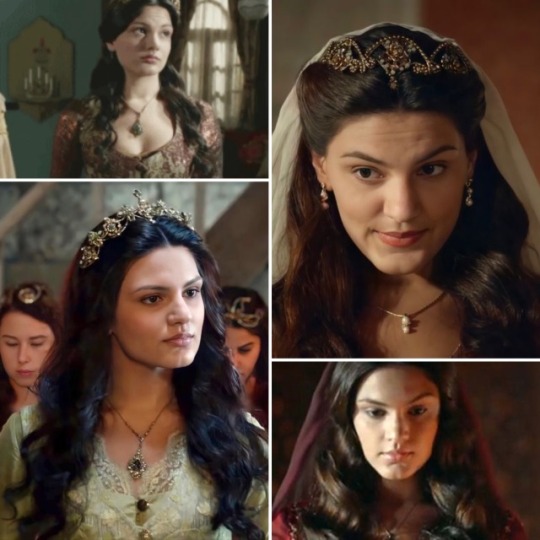
Meglepő valóságok
A sok kitalált karakter után azt gondolhatnánk, hogy az összes eunuch és kalfa kitalált karakter volt, hiszen meglehetősen keveset tudunk a háremről. Azonban ez nem igaz! Volt néhány történelmi ihletésű karakter, mint például Gazanfer Aga, aki bár létezett, és a valaha volt egyik legbefolyásosabb eunuch volt, nem Nurbanu hű embere volt, hanem II. Szelim szultáné. Gazanfer pályája csúcsát egyébként Safiye Sultan uralkodása alatt érte el.
Hasonlóan valós volt Canfeda Hatun is, aki Nurbanu leghűségesebb szolgálója volt és az egyik legbefolyásosabb kalfája korának. Igaz, Canfeda sorozatbeli karaktere, a történelmi Nurbanu két hűséges szolgálójának ötvözéseként született meg. Nurbanu fiatal korában, Szelim hercegi háremében nem Canfedával, hanem egy másik kalfával ismerkedett meg, aki élete végéig hűséges szolgálója maradt. Canfeda csak Szelim uralkodása alatt került képbe és vált Nurbanu fő segítőjévé.
Hozzájuk hasonlóan Afife Hatun karaktere is részben valós volt. Szulejmán szultán szoptatósdajkáját tényleg Afifének hívták és a szultán mindig tartotta a kapcsolatot az asszonnyal. Azonban Afife Hatun sosem költözött Isztambulba, hogy irányítsa a szultáni háremet, hanem egyszerű életet élt.
Gracia Mendes Nasi az utolsó évadban került bemutatásra, mint gazdag portugál zsidóasszony, aki portugál menekülteknek segített Isztambulba jutni. Később Gracia a nagyvezír Rüsztem Pasa szeretője lett, aminek köszönhetően szembe került Mihrimah szultánával. A valóságban Gracia Mendes igen jótét lélek volt, aki elkötelezett volt a zsidó hagyományok és zsidó testvérei iránt. Sosem volt Rüsztem szeretője és Mihrimah ellensége. Azonban a sorozathoz hasonlóan, Gracia a valóságban is élvezte a szultán támogatását és segítségével nagy fejlesztéseket vitt véghez Isztambul zsidó negyedében és nagyon sok menekültnek segített új életet kezdeni az Oszmán Birodalomban.
A sorozat utolsó évadának egyik legérdekesebb vendégszereplője Jagelló Anna volt, az egykori lengyel király lánya, az új lengyel király testvére. Bár az asszony valós történelmi személy volt, a történelmi Anna sosem utazott Isztambulba és sosem levelezett Hürrem szultánával. Azonban Hürrem többször is váltott levelet Anna édesanyjával Bona Sforzával, Anna édesapjával, I. Zsigmond lengyel királlyal, valamint Anna testvérével, a későbbi II. Zsigmond Ágost lengyel királlyal, sőt Anna másik testvérével Izabella, magyar királynővel is. Hürrem közbenjárásának köszönhetően Szulejmán uralkodása alatt meglehetősen jó, szinte baráti volt a viszony a Lengyel Királyság és az Oszmán Birodalom között.
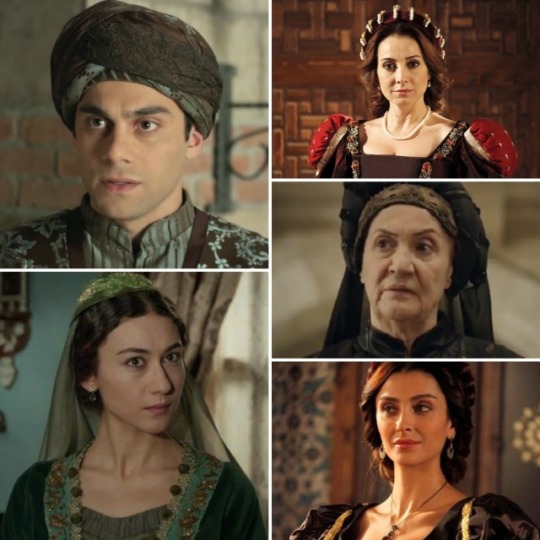
#selim ii#gazanfer agha#gazanfer#suleiman the magnificent#safiye sultan#suleiman i#suleyman i#haseki hürrem sultan#hürrem sultan#nurbanu sultan#aybige hatun#ayse hafsa#ayse hafsa sultan#princess isabella#firuze#firuze hatun
104 notes
·
View notes
Text
LISTA POSTACI
Sułtan Sulejman Wspaniały Wolny
Sułtanka Hürrem Wolna
Sułtanka Şah Wolna
Książę Cihangir Wolny
Sułtanka Mihrimah Wolna
Sułtanka Esmahan (Córka sułtanki Şah i Lütfi Paszy) Wolna
Rüstem Pasza Wolny
Lütfi Pasza (Mąż sułtanki Şah, ojciec sułtanki Esmehan) Wolny
Malkoçoğlu Balı Bey Wolny
Ayas Pasza Wolny
Hüsrev Pasza Wolny
Süleyman Pasza Wolny
Afife Hatun (Skarbniczka i zarządczyni haremu) Wolna
Firuze Hatun (Perska księżniczka, faworyta Sulejmana) Wolna
Mercan Ağa (Służący sułtanki Şah) Wolny
Fahriye Hatun (Służąca sułtanki Hürrem) Wolna
Sümbül Ağa Wolny
Şeker Ağa Wolny
Pargalı İbrahim Pasza Wolny
Sułtanka Hatice Wolna
Gülfem Hatun Wolna
Sułtanka Huricihan Wolna
Książę Osman Wolny
Książę Mehmed Wolny
Cihan Hatun (Faworyta księcia Mehmeda) Wolna
Książę Mustafa Wolny
Sułtanka Mahidevran Wolna
Taşlıcalı Yahya Bey (Poeta, przyjaciel księcia Mustafy) Wolny
Fidan Hatun (Służąca sułtanki Mahidevran) Wolna
Rümeysa Hatun (Faworyta księcia Mustafy) Wolna
Ayşe Hatun (Faworyta księcia Mustafy) Wolna
Książę Selim Wolny
Nurbanu Hatun Wolna
Dilşah Hatun (Faworyta księcia Selima) Wolna
Książę Bajazyd Wolny
Rana Hatun (Faworyta księcia Bajazyda) Wolna
Tuğrul Bey (przyjaciel Księcia) Wolny
Defne Hatun (Faworyta księcia Bajazyda) Wolna
Nigar Kalfa Wolna
Sułtanka Beyhan Wolna
Matrakçı Nasuh Wolny
Ferhad Pasza (Mąż sułtanki Beyhan) Wolny
Ebussuud Efendi (Sędzia Stambułu) Wolny
Barbaros Hayreddin Pasza (Admirał Imperium Osmańskiego, przyjaciel Mustafy) Wolny
6 notes
·
View notes
Photo









(Almost) Every Costume Per Episode + Fidan Hatun’s purple gown with embellished collar in 3x01,3,8,9,10
#Muhteşem Yüzyıl#Magnificent Century#mcedit#perioddramaedit#weloveperioddrama#period drama#perioddrama#Fidan Hatun#Muhtesem Yuzyil#wspaniałe stulecie#Even In Devotion There Is No Peace#Entertainment for the Sultan#Attempt on the Favorite of the Sultan#Lesson For Firuze#The Truth About the Daughter of Ibrahim Pasha#costumeedit#costumes#costume edit#costume drama#costume set#costume series#Almost Every Costume Per Episode#historical drama#Awkward-Sultana
41 notes
·
View notes
Text

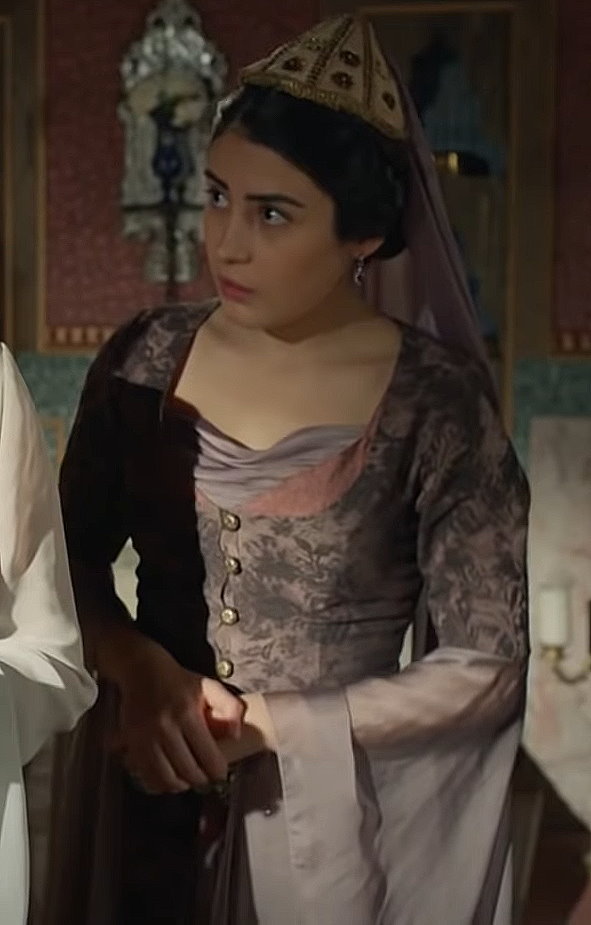
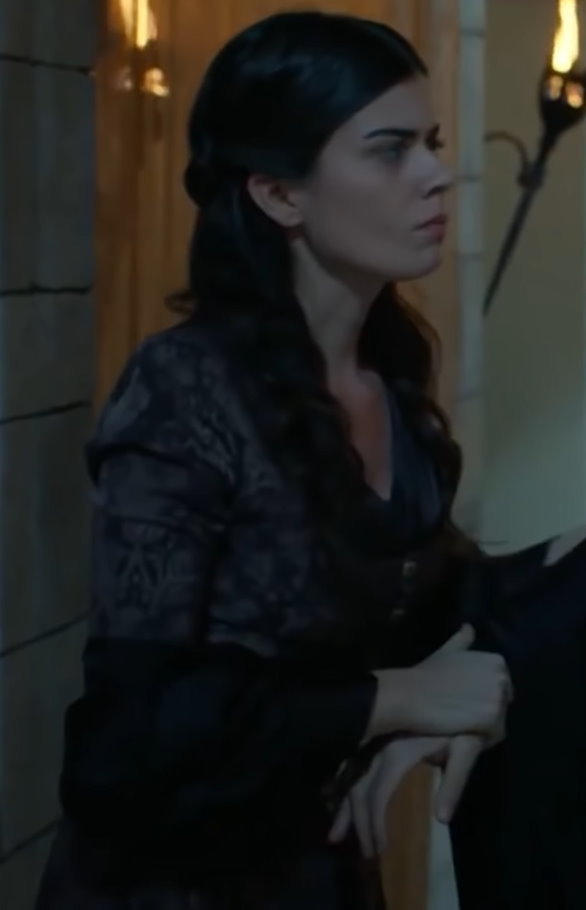
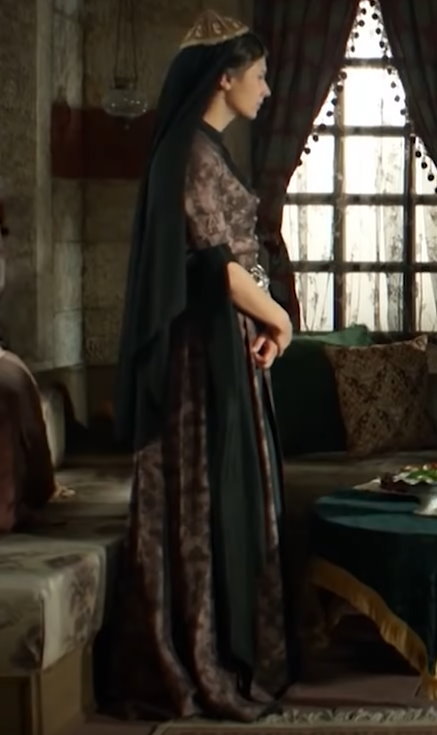

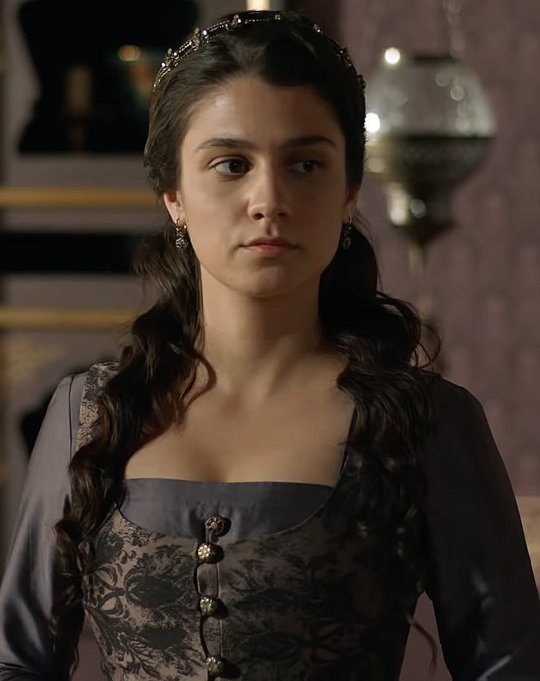
This pink and grey kaftan was first worn by Mahidevran Sultan in the first episode of the third season of Magnificent Century. It appeared again three times in the fourth season, first on Melek Kalfa in the thirteenth episode, then on an unnamed harem member in the twenty-third episode and lastly on Fidan Kalfa in the twenty-sixth episode.
Magnificent Century: Kösem removed the sleeves and used the kaftan on Menekşe Hatun in the first episode of the first season and on Meleki Hatun in the sixth episode of the second season.
#Muhteşem Yüzyıl#Muhteşem Yüzyıl: Kösem#Magnificent Century#Magnificent Century Kösem#Magnificent Century Kosem#period drama#costume drama#historical drama#Mahidevran Sultan#Melek Kalfa#Melek Kalfa (Servant of Fatma Sultan)#Unnamed Harem Members#Fidan Kalfa#Fidan Hatun#Menekşe Hatun#Menekse Hatun#Menekşe Hatun (Servant of Halime Sultan)#Meleki Hatun#reused costumes#recycled costumes
12 notes
·
View notes
Text
Yahu arkadaş. Şu karılarının resmini koyanlara birisi Balık Etli hatun iyidir mi dedi ne dedi. 300 kiloluk fillerin resmini koyuyorsunuz. O karı zaten sikilmez. Mide kaldırmaz arkadaş. Bu nedir. Hiç mi zayıfla demiyorsunuz hiç mi kokuyorsun demiyorsunuz. kasap reyonu gibi etlerin resmini koyuyorsunuz. Fidan gibi kadınlara hakaret ulan bu koydugunuz resimler. her tarafından yağ akan, selülitleri bacakları kaplamış karılarınızın kimleri etkileyeceğini sanıyorsunuz. İğrenç resimlerle zevk köreltmekle mi görevlisiniz arkadaş bu nedir yahu
3 notes
·
View notes
Text
sdr
mde
Bugün sevdiklerimiz, bizlere rahatlıkla gülen kalpler çizebiliyorsa bunun nedeni geçmişimiz de gülen kalplerini seve seve bizler için feda edenlerdir. Onların zaten Cennet’te olduklarına inanıyorum ve oradan hala bize gülen kalpler yolladıklarına da. Küçücük bedenlerindeki kalpleri ne kadar da büyükmüş ve ne kadar da içten gülümsemiş ki, 115 yıldır içimizi ısıtmaya devam ediyor ve devam da edecek çünkü Türkiye Cumhuriyeti ilelebet payidar kalacaktır hem zaten bize kim zincir vuracakmış? Şaşarım…
Geçtiğimiz Perşembe günü Efe’yi okuldan ben almıştım ve annemlere gidiyorduk. Annemin evine yaklaştığımız sırada ve sonrasında da kapının önünde, arabada geçen konuşmamızı sizlerle de paylaşmak istedim.
Efe: “ Teyze, 18 Mart geliyor ya okulda tören yapacağız. Şiir okuyacağız. 18 Mart’ta düşmanlar bizimle savaşmış. ” Diye söze girdi.
– Evet Efe, İngilizler, Fransızlar ve diğer birkaç ülke bizimle savaştı. Hatta İngilizler Hindistan ve Avustralya’dan da asker getirdiler ama yenildiler.
– Peki sonra ne oldu Teyze?
– O sırada bizim arkadaşımız olan Almanlar yenildiği için biz de yenilmiş
sayıldık. Sonra Kurtuluş Savaşı oldu ve kazandık. Sonra da o ülkelerle dost olduk. Atatürk o ülkeleri ziyarete gitmedi ama o ülkelerin devlet başkanları, kralları bizi ziyarete geldiler.
– Kurtuluş Savaşı niye olmuştu Teyze?
– Düşmanlar yurdumuzu işgal etmişti Efeciğim. Biz de bunu kabul etmedik.
– Teyze, geçen gün de 12 Mart’tı. İstiklal Marşımız kabul edilmiş.
– Evet Efeciğim. İstiklal Marşımızın sözlerinin tamamını şimdi pek anlamayabilirsin ama sözleri çok güzeldir. İlerde ne demek istediğimi anlayacaksın.
– Öğretmenimiz de öyle söyledi Teyze. Dördüncü sınıfa geçince anlayacakmışız. Hem zaten ben şimdiden dört kıtasını ezbere biliyorum. ( Bu son cümleyi Efe Mert gururla üstüne basa basa söyledi. )
– Seyit Onbaşı varmış, mermiyi kaldırmış.
– Evet Efeciğim, çok güçlüymüş.
– Çok güçlü değilmiş Teyze, yapabileceğine inanmış, kendine güvenmiş ve yapmış. ( Teyze ilk anda afallar ama sonra cümlenin nereye vardığını duyunca rahatlar. )
-Haklısın Efeciğim, kendisine güvenmiş, inanmış ve mermiyi kaldırmış. Efe, hani biz Ayvalık’a giderken havaalanına iniyoruz. İşte o havaalanının adı Seyit Onbaşı’nın adı. Kendisi oralıymış.
-Biliyorum Teyze, Ayvalık’a giderken heykelini görmüştüm.
-Efeciğim Seyit Onbaşı gibi Nene Hatun var, Kara Fatma var.
-Onları bilmiyorum Teyze.
-Olsun Efeciğim, öğrenirsin. Onlar da bizim kahramanlarımız. Yurdumuzu işgal ettiklerinde bir avuç Türk, Atatürk’le birlikte düşmana karşı savaşmış. Kahramanlıklar yapmış Seyit Onbaşı gibi.
Süper kahramanlar gibi. ( O sırada Efe Mert’in gözleri heyecan ve şaşkınlıktan iyice açılır.)
-Evet Efeciğim, Süper Kahramanlar gibi.
-Ama onlar gerçekmiş Teyze! ( Bu sefer de Teyze’nin gözleri hem şaşkınlıktan hem de sevinçten açılır çünkü Efe’nin yaptığı Süper Kahramanlar benzetmesi hoşuna gider hem de Efe o kahramanların gerçek olmadığının farkındadır. Çok şükür ki, gerçek kahramanları da hemen ayırt edebilmektedir. )
-Evet Efeciğim, onlar gerçekmiş.
-( Arabanın konsolundaki yazıları işaret ederek ) Teyze, artık yazım güzelleşti buradaki yazıların üstünden geçeyim. Sana da bir sürpiz daha yapayım.
– Peki yap hadi!
Efe hem “ Seni çok seviyorum “ yazısının üzerinden geçer hem de yanına gülen bir kalp yapar.
Bu gülen kalp, tüm süper kahramanlarımız ve çocuklar için olsun. Her biri umut, fidan ve geleceğimiz olanlar için olsun hatta bizler için de olsun.
Ne mutlu süper kahramanlarımız var, hem de gerçek süper kahraman onlar!
18 Mart 2019, OZM
Süper kahramanlar, gülen kalpler Bugün sevdiklerimiz, bizlere rahatlıkla gülen kalpler çizebiliyorsa bunun nedeni geçmişimiz de gülen kalplerini seve seve bizler için feda edenlerdir.
#18 Mart#Aegean Sea#Altınova#Ayvalik#Ayvalik&039;ta yasam#Çanakkale#çocuklar#barış#Blog#Blogger#Cunda#Cunda"da hayat#Gulen Kalpler#hayat guzeldir#Küçükköy#life#lifestyle#Sarımsaklı#Super Heroes#Super kahramanlar
0 notes
Note
I can tell you adore Mahidevran, so I need to ask. Between all of her kalfas (Gulsah, Fatma, Fidan, Diana/Fahriye), who did you prefer and who do you think she had the strongest relationship with?
Ahh, yes, I adore her so much! 😊 Thank you for the question, because I find this topic very interesting and I've always wanted to cover it. (that's why, along with my favourite relationship, I'll go through them all.)
The relationships Mahidevran had with her kalfas/servants are consistently determined by boundless loyalty and ability to be relied on in every case. And that's normal, because it's what's expected in the system and her role as a sultana where every mistake has the chance to put you in a dangerous position, even if it's out of your sole control. However, these relationships evolve as she evolves in many different ways and I don't feel she treats her servants all that badly as the fanbase makes it out to be at times. They play a role in humanizing her just like her other positive relationships and she has her fair share of soft moments with them.
My vote for Mahidevran's best relationship with a kalfa (also my personal favourite character of the bunch) goes to Fidan. She represents the best of Mahidevran's newfound calmness and levity in later seasons - it's perhaps her most "mellow" relationship. It's also the most prominent one since Gülşah, which adds even more points. Mahidevran and Fidan get closer with time. First they didn't have much of a base where she was in Hürrem's party at first (though she still shared more scenes with Gül Aga than her) and then Gülşah and Fatma overshadowed her role, but afterwards it was clear how much they respected and trusted each other. The loyal aspect of such relationship certainly played the strongest with Fidan - while following Mahidevran's every order and always doing her duties faithfully without a second thought, she was this devoted to Mahidevran to the point I feel a part of her shared her principles for following tradition (as seen with both Fatma and Ayşe Hatun) and didn't want to leave her when she was in poverty and offered her to leave herself in order to find a better life. Fidan loved Mahidevran so much she assured her she didn't have any fault in E105 and asked her how did she forgive Hürrem after everything. Mahidevran hasn't really been that cordial with her servants for a long time, that's why Fidan was such a big step for her: she finally found one who would be always by her side, one she could fully trust and share everything with. And Mahidevran knew it well, especially by the end of S03 and the whole S04: she entrusted her to be her baş kalfa until the end, Fidan was the only one who knew about her plan for Mehmet, they both went to the woman who gave the fortune amulet for Mustafa in E123. They worked together and it showed, in more harmony than Mahidevran's other relationships of this kind. They complemented each other so well with their gained and present emotional maturity. There barely were problems between them, except for them disagreeing about Rumeysa in E96 and some moments where Fidan made grave mistakes (like losing the trails of the spy in E78). Fidan knew Mahidevran well, being aware and sympathetic of all her experiences, while demanding respect for her of the others in the harem in a way that doesn't harm her. Fidan is the servant Mahidevran has been the most lenient to, while demanding the necessary amount of loyalty.
Admittedly, I find Mahidevran's relationship with Gülşah interesting, in spite of its toxicity. They begin with years of experience together and it's perhaps the relationship where Mahidevran expresses her vulnerability and desires most openly, at least at first. Gülşah is clearly dedicated to her sultana, even if in a very unhealthy way: she ties Mahidevran's wishes to her own to the point what Gülşah wants automatically becomes what Mahidevran needs in her eyes, no matter that her mistress may tell her the opposite. Gülşah's excuse is always that she does everything for her sultana's own good, but she actually clings to her selfish impulses more often than not. When Mahidevran told her numerous times not to act against Hürrem, Gülşah felt she must at all costs do so, even in secret, when she was the one offended, knowing that Mahidevran may not want it now, but that life would be better for them both when it's done anyway. And it's a pattern that is followed with many actions of Gülşah's before and afterwards, making the loyalty to Mahidevran disappear more and more, without Gülşah actually realizing it. I get why she would want to go for this stuff: outside of Mahidevran, Gülşah doesn't have anyone, really - she's usually mocked in the harem by Nigar, Sümbül, Gül and even Şeker Aga or Daye later alike. Her serving Mahidevran may be her only solace not only in terms of existence (that's why she felt so helpless when Mahi finally showed her the door), but also in terms of status and respect, hence even when she makes up stuff or does something wrong, she feels it may up their duty to respect her, as much as it may even Mahidevran's odds against Hürrem. But what Gülşah actually ends up doing isn't at all helpful and only does more harm and brings more trouble than it's worth. That's why I feel Mahidevran should've shown her the door even earlier. That's why Gülşah "goes too far away from her role" and it all causes more suffering both for her and Mahidevran.
Mahidevran, in her part, cares about Gülşah a lot, though, and I felt it's namely that care, that strive of Gülşah's to make things right so many times, the reminder of the long time she served her and Mahidevran's need to feel less alone, for someone to listen and share her worries with when problems occur (which is more in S01 than in S02, but still) what made her to keep her for this much time, despite that she was certainly aware of the fact that Gülşah may cause her problems. An interesting thing I found on rewatch is that Mahidevran didn't trust her as much early on as she trusted, say, Fidan or Fatma, seen by how hesitant she was to even give her the task to poison Hürrem. (or is that also because of Mahidevran's own uncertainty of the whole thing that the wish of seeing Hürrem's end ultimately prevailed over? Eh, maybe both.) She also consistently asked her was she sure about what she has heard or seen, she read through her moods quickly, managing to realize when she messed up (or wasn't fine in general) in E23, along with having suspicions in E58 etc. - maybe they had issues in Manisa, too, but they magnified by thousand in Topkapi, going beyond Mahidevran's every expectation or doubt. Mahidevran's most negative traits in Topkapi often manifested through Gülşah: shifting the blame to her and her alone in the poison situation, beating her up in E23, letting her stress and anger out on her, which was a big episode for her. But at the same time, Mahidevran vouched for Gülşah more than anyone- she didn't want to give her up even in her biggest crime in E23, she was so glad when she was back in E09, she usually turned to her first when good things were happening. It's like Gülşah was supposed to be the one next to her, but after a certain point, Mahidevran kept her only because of narrative stagnation when she trusted her in S02 much more than she did in S01 before her biggest screwup. They both weren't a good influence on each other overall. It was a necessary relationship for Mahidevran's story, but she's much better off without her. Gülşah also did a part in triggering Mahidevran's worst instincts in acting in tense situations and it's even worse that except for one case, she was always rightfully harsh even when she went too far: Gülşah's obsession for her triggered her own worst character traits as much as it did her best ones. The situation with Gülşah in E23 is probably what caused Mahidevran to seem more closed off with servants aside from Fidan when it came to showing as much care and letting them near her.
I see Mahidevran's relationship with Fatma as more mixed: while she appreciated her loyalty as she said in E81 and realized that it would've been better for her to leave the harem after little Süleiman's death before she got worse, there were times when both of them were at odds. Fatma was probably the biggest offender of the side of Mahidevran's that is closing herself off I mentioned above (along with her getting carried away in her own power and victory while ruling the harem in S02): she didn't appreciate Fatma "biting off more than she could chew" and going maybe too far with her ambition for Mustafa in her eyes. She also had several other problems with her: she wasn't okay with Fatma neglecting her child. She, as a keeper of tradition, wasn't okay with her complaining about Helena. She rightfully wasn't okay with her crying and complaining that could harm the baby in her belly. She was still willing to sacrifice her in a point of no return to prevent Mustafa from marrying Helena when reasoning with him didn't work. Mahidevran sure appreciated what Fatma did for her, kept her by her side when she ruled the harem (yes, she did that also because of Fatma's stunt with the concubine that had to go to Mustafa, but still, Fatma's loyalty was also a reason.) and cared for her wellbeing, but it felt like Fatma was never truly in her complete favor, Mahidevran never truly opened up to her the way she could with others. She had to always keep an eye on her and keep her in check. It certainly was a better relationship than with Gülşah, Fatma was definitely doing her job very well and she and Mahidevran still had nice moments that contrasted with her strictness here, but it still wasn't the best.
Diana started out in a very promising manner and it was a very unusual start for Mahidevran herself, as well: Diana is both rebellious, yet loyal and honest; and that honesty in her eyes caused Mahidevran to believe her even though she, for all Mahi knew, could've lied about did she steal the money from the concubine or not anyway. Mahidevran could discard the usual scolding for causing strife in the harem when the one who caused it showed loyalty. Mahidevran valued that Diana was merely following her duties, even though it was why her plan for Helena went wrong, which is an indicator of her character development: showing her progression in reaction once she could pull herself together and move forward and was being overally more collected and patient. (she wouldn't have reacted like this in S01/2) Diana was in the position of a servant who was slowly winning Mahidevran's favor time and time again to the point Mahi began fully trusting her to do a dangerous task. It all began to falter once she was sent to Topkapi, though: it seemed like Diana and Mahi didn't keep in touch that much (the message in E90 aside) due to the risky circumstances and Şah Sultan's interference and once she became Fahriye Kalfa, she ultimately became much more devoted to Hürrem than she ever was to Mahidevran. It's like the loyalty to Mahidevran had no ground to stand on anymore, hence Mahidevran couldn't trust her anymore and them parting ways. I admit I didn't like the direction the writers took Diana to, in spite of its inevitability: she lost nearly everything that made her so interesting to begin with and was hardly that involved in the story anymore; it's saddening when she had such a solid foundation. I have a soft spot for this foundation: it was an amazing start for Mahidevran's new "life chapter" and it helped soften her up when we went forward for Fidan, too.
#magnificent century#muhteşem yüzyıl#muhtesem yuzyil#mahidevran sultan#fidan hatun#gulsah hatun#fatma hatun#diana#fahriye kalfa#ask#nurbanu-baffo
21 notes
·
View notes
Text
bedava kayseri escort fidan
Doğruyu söylemek icabında buranın yabancısıyım ve bir oranaranıyorum. Bana sahip çıkacak parasal desteğini üzerimden esirgemeyecek Kayseri iş adamları, yetişkin seçkin beyleri büyük sabırsızlıkla bekliyorum. Kalbim kadar cinsel bölgem de yangın yeri. Henüz cinsel kimliğimi tanımlarken dahi kendimi epey azgın hissediyordum. Bir müddet erkeksizlikten kendime dokunarak mastürbasyon yaparak orgazm yolunu seçtim. Suriyeli bayan dendiğinde akla derhal bakımsız, yetişkin ihtiyar ve şalvarlı kadınlar geliyor. Sizi de anlıyorum yolda görüldüğü modeller üstünden genelleme yapıyorsunuz. Fakat beni görmeden hüküm vermeyin derim. Kayseri Escort Suriyeli kadın resimleri ile sizlere erotik vücudumdanmuhtelif fotoğraf bukleleri yaptım. İçerisinde çıplak fotoğraflarım ve erotik cinsel pozisyonlarla nefesinizi kesecek resimlerim yer alıyor. 25 yaşındayım, içim dışım bir. Karakter olarak çabuk işlek, olumlu ve güler suratlı birisiyim. Müşterilerimle olan samimiyetim onları bana daha fazla çeker. Şu ana dek paralı cinsel temas versem bile birçok yetişkin Kayseri beyinden evlilik önerisi aldım. Bu da demek oluyor ki sadece manken fiziğim ile değil onları duygusalşeklinde de etkileyebiliyorum. Suriyeli Kayseri Escort cinsel ilişkilerimi kendisi evinde görüşen genç Suriyeli kız olarak sağlıyorum. Eğer arzulanırsa haneye otele gelen hatun şeklinde de evlerinize konukolmaktan çekinmem. Öpüşmek, sevişmek ve azgın dillerimizin ucu ile birbirimizi hudutsuzoral muamele ile tatmin etmek. Benim içersinde cinsel ilişkinin en zevkli anlarından birisi bir erkeğin bakımlı vajinama çöküp bana dakikalarca oral temas yapılması. İşte o anlarda göğüs uçlarım zevkten dikleşecek, dolgun dudaklarımı ısıracağım. Dolgun esmer göğüslerimden kavrayıp beni kendinize doğru çekin ve sert davranın istiyorum. Daracık anal deliğime giden parmaklarınız evvel beni okşatıp zevkten inletsin ardından da sıcacık aletiniz ile içimde sert gezinmeler gerçekleştirin. Kayseri Escort Suriyeli randevularımda kondomsuz cinsel temas, mutlu sonlu masaj, ağza yüze boşalma cimcif sürprizlerim ile kendinizden geçeceksiniz.
1 note
·
View note